This document provides an overview of technology and attempts to define it. It discusses how technology involves tools and techniques, as well as organization and systems. Technology leaves humans both exhilarated and terrified due to its positive and negative consequences. While modern technology is generally viewed favorably, this support is based more on faith than understanding for most people. The document seeks to provide a better understanding of technology by examining its key features and effects.
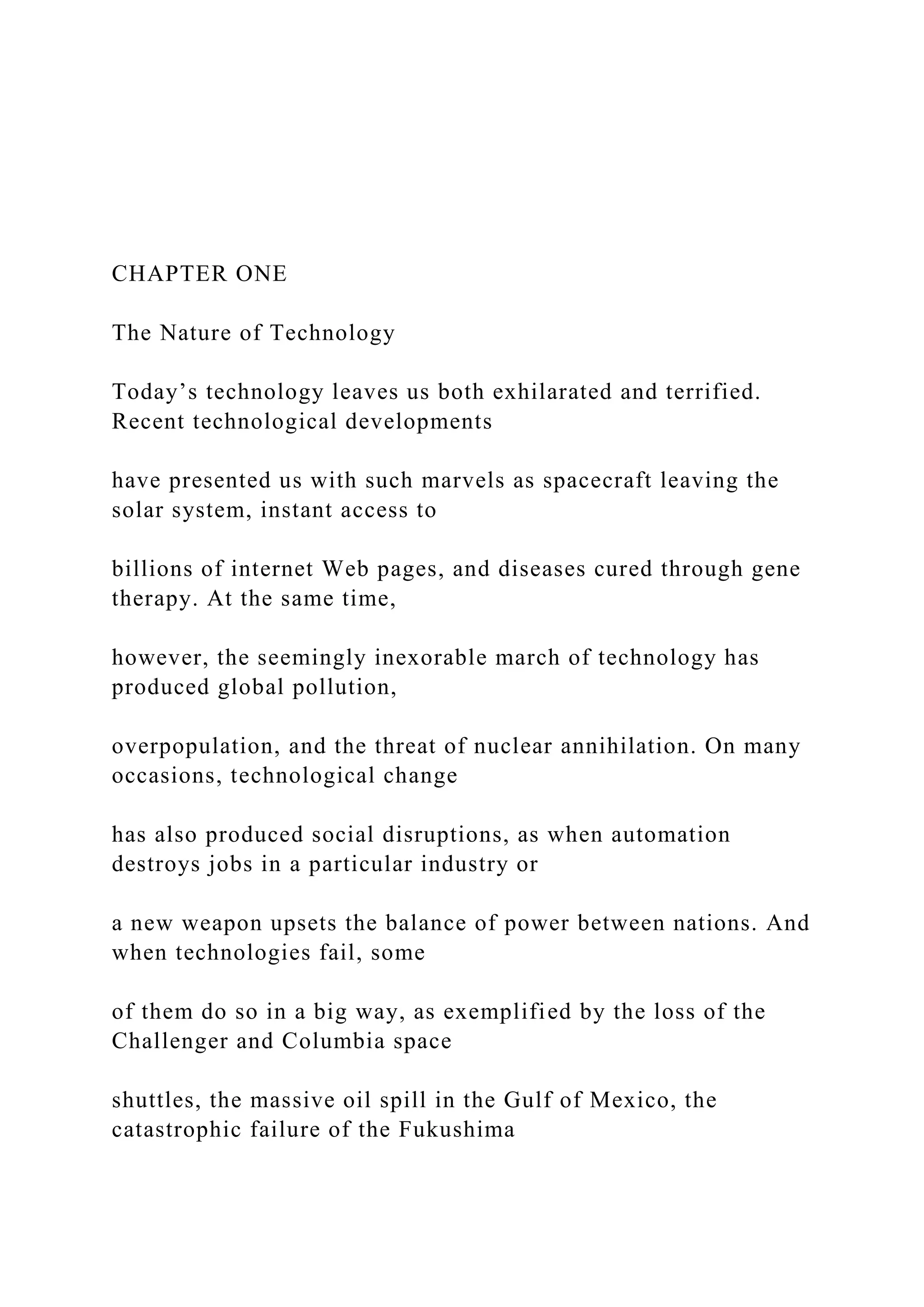
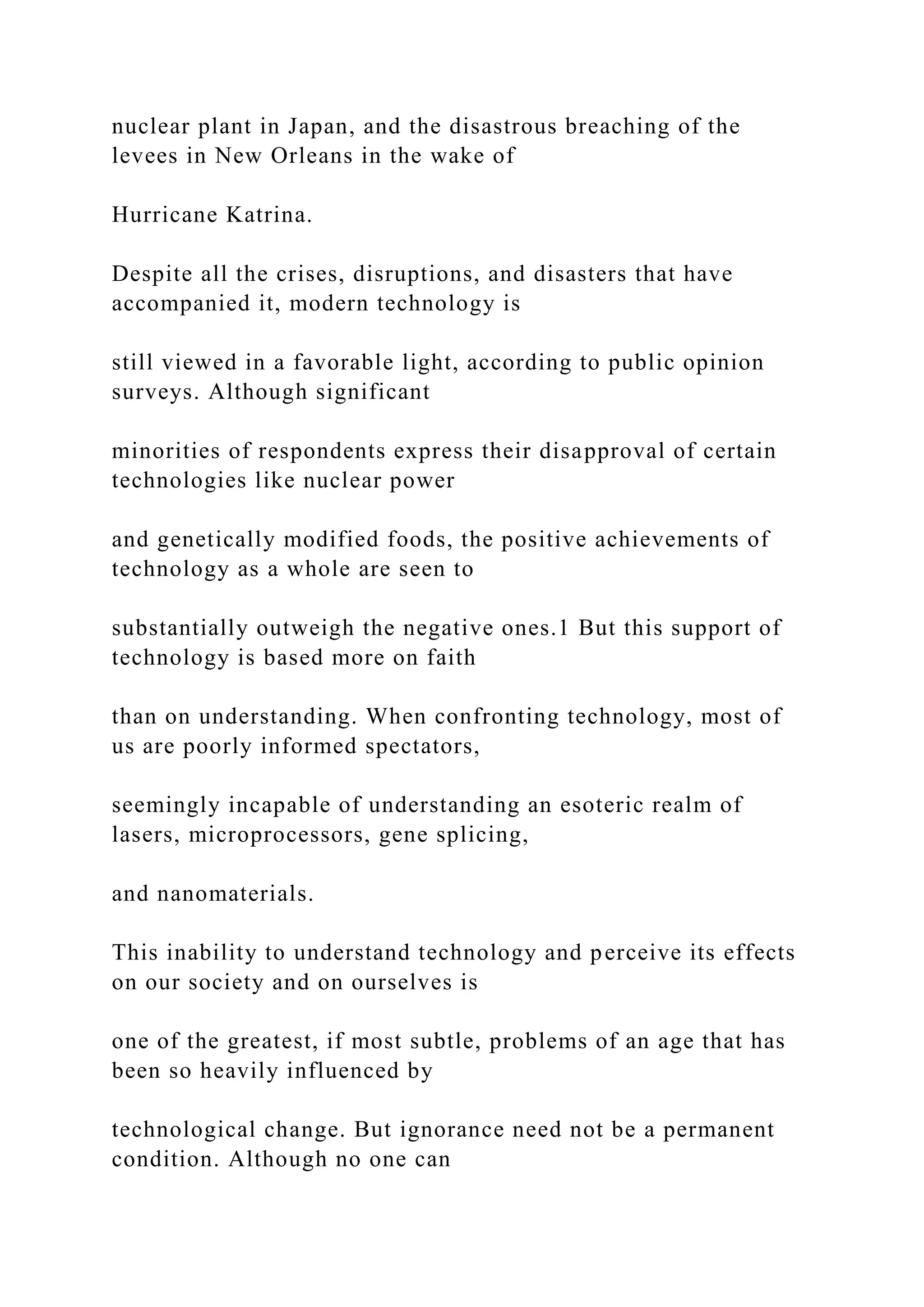
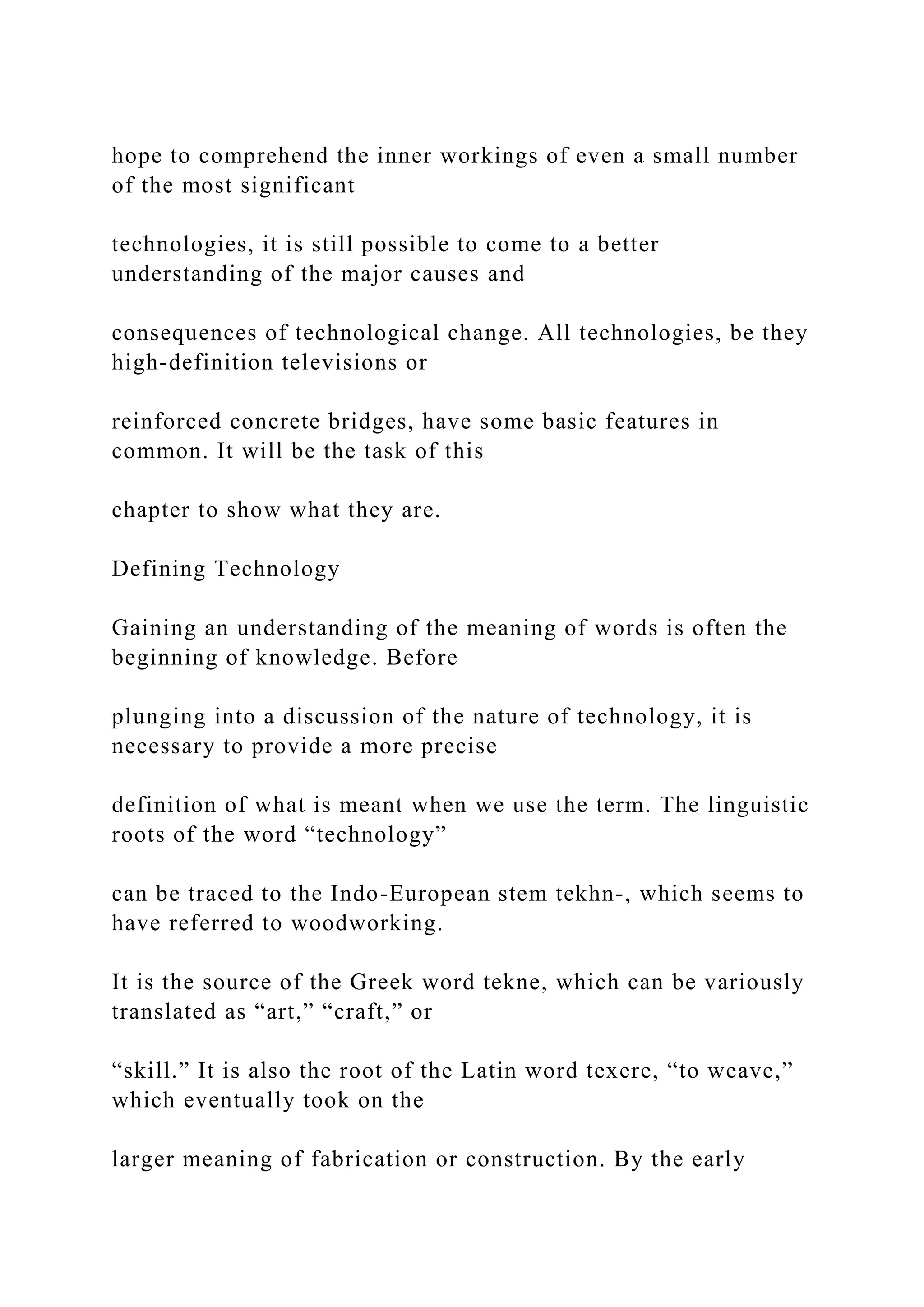
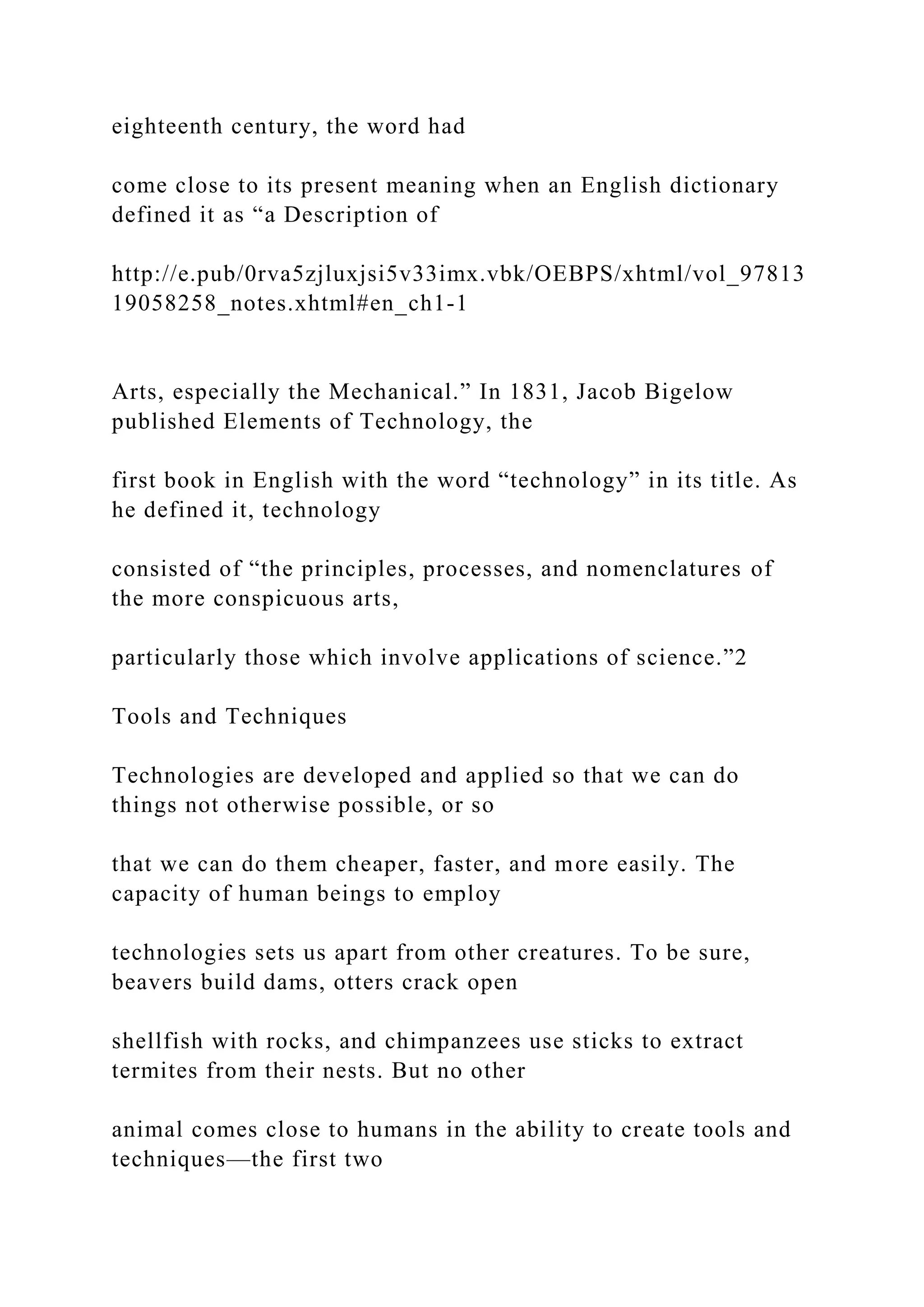
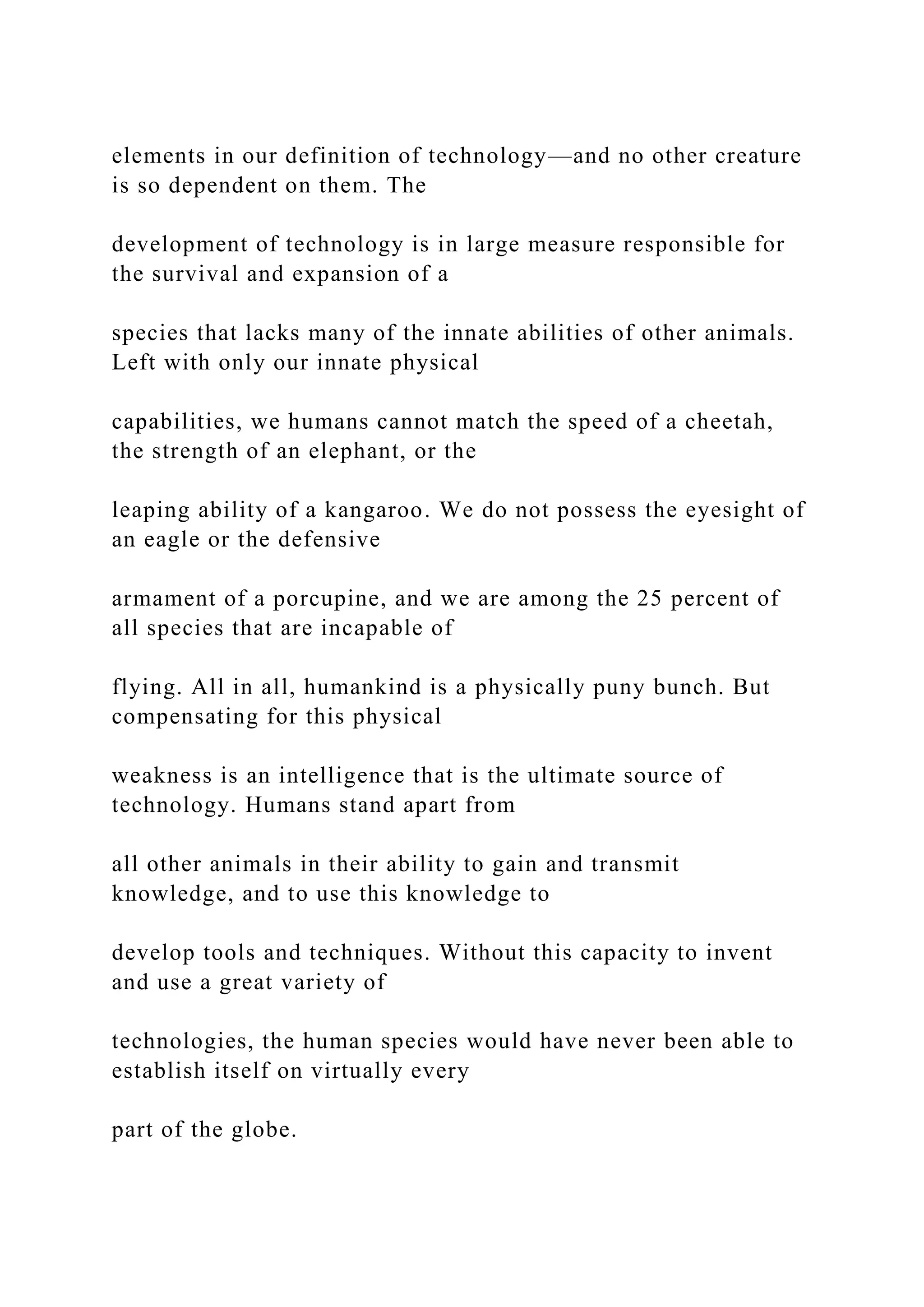
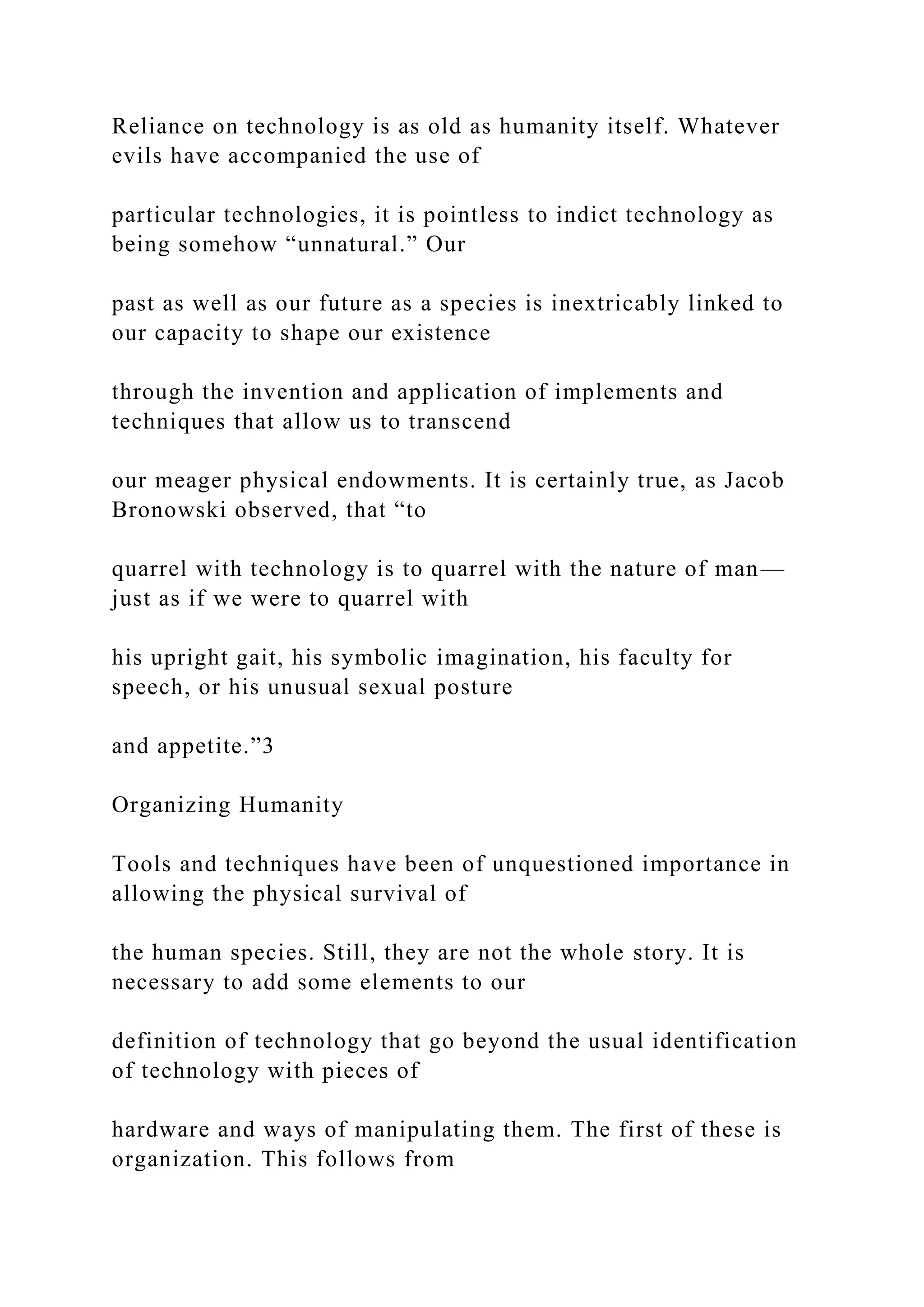

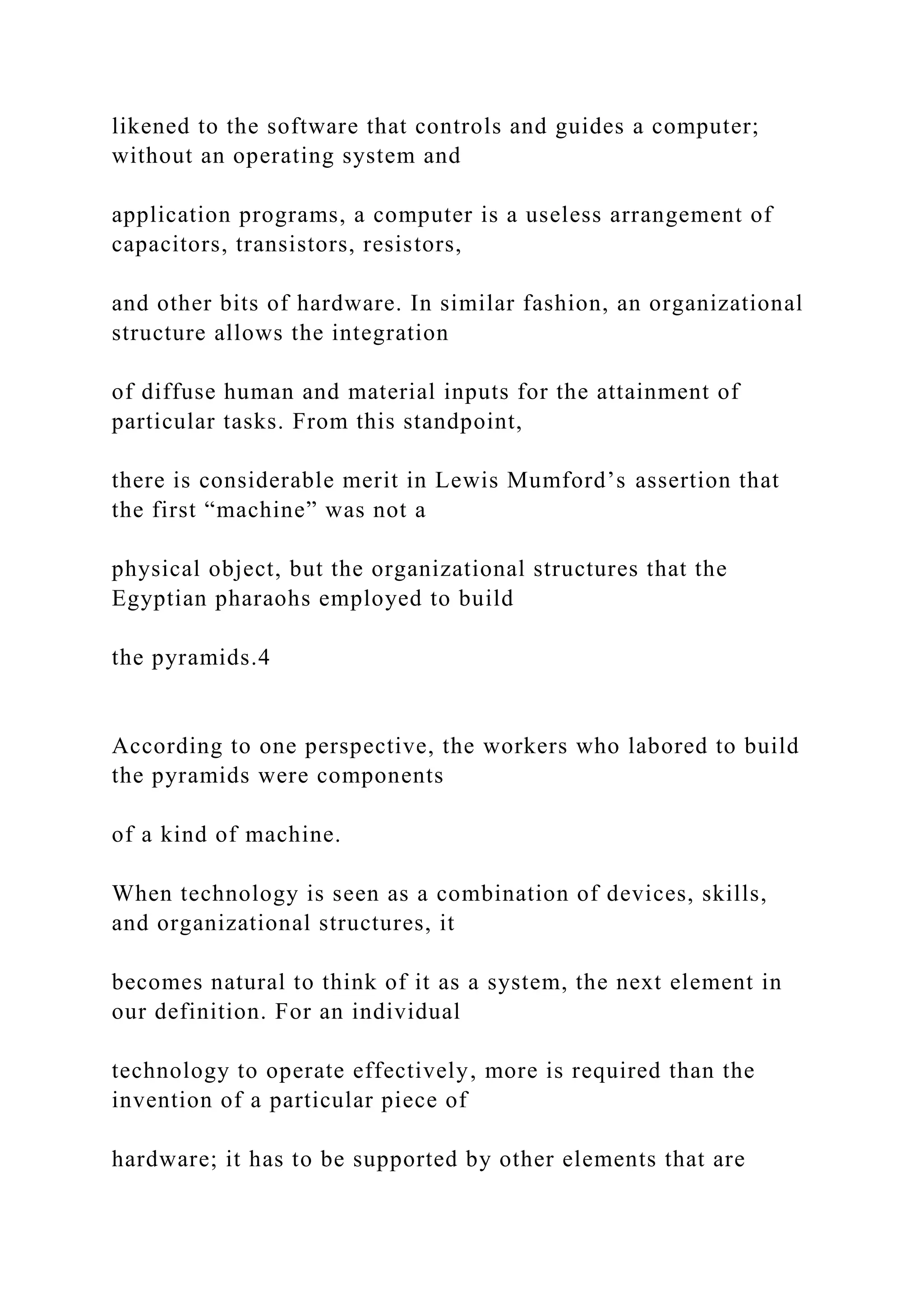

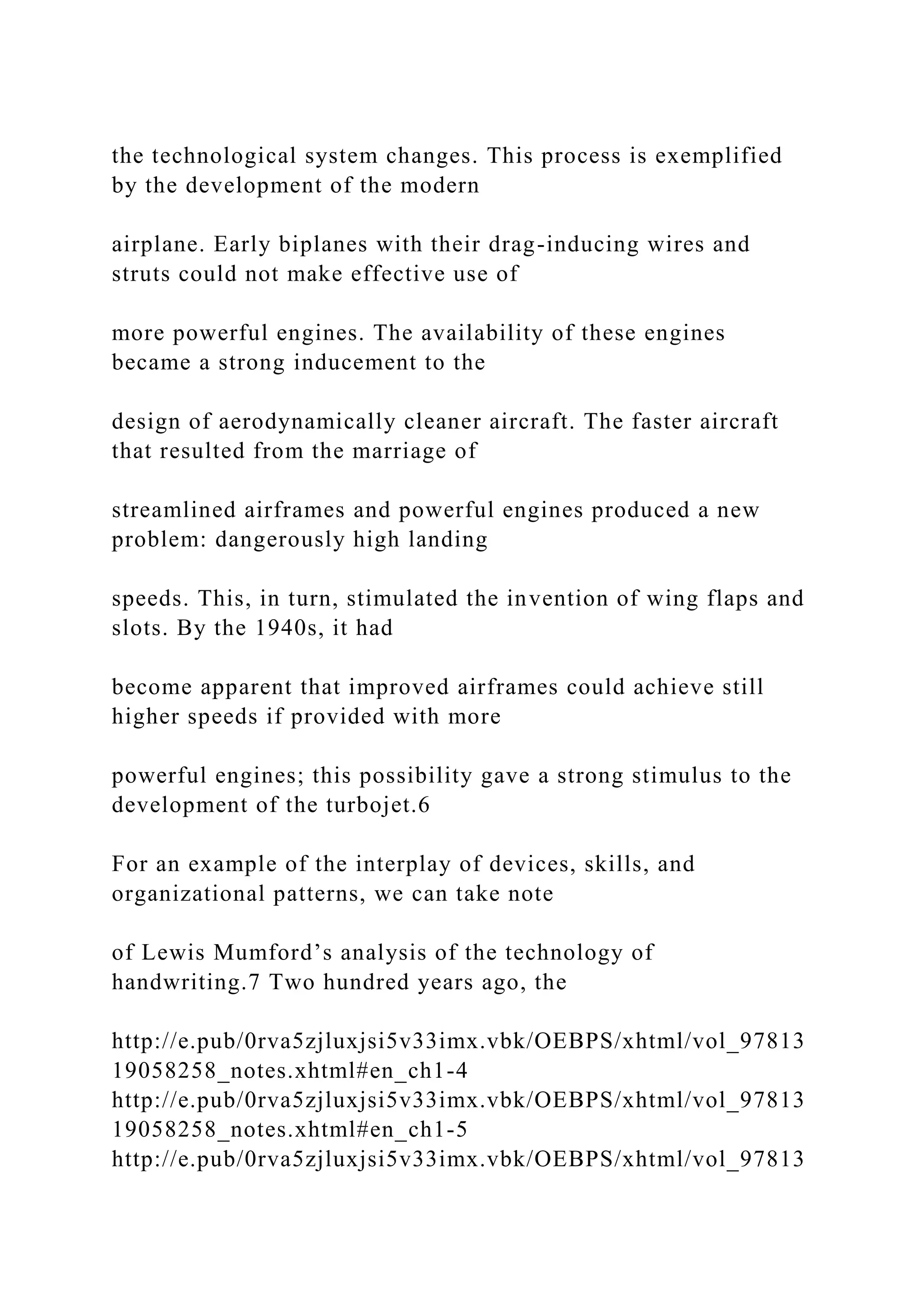
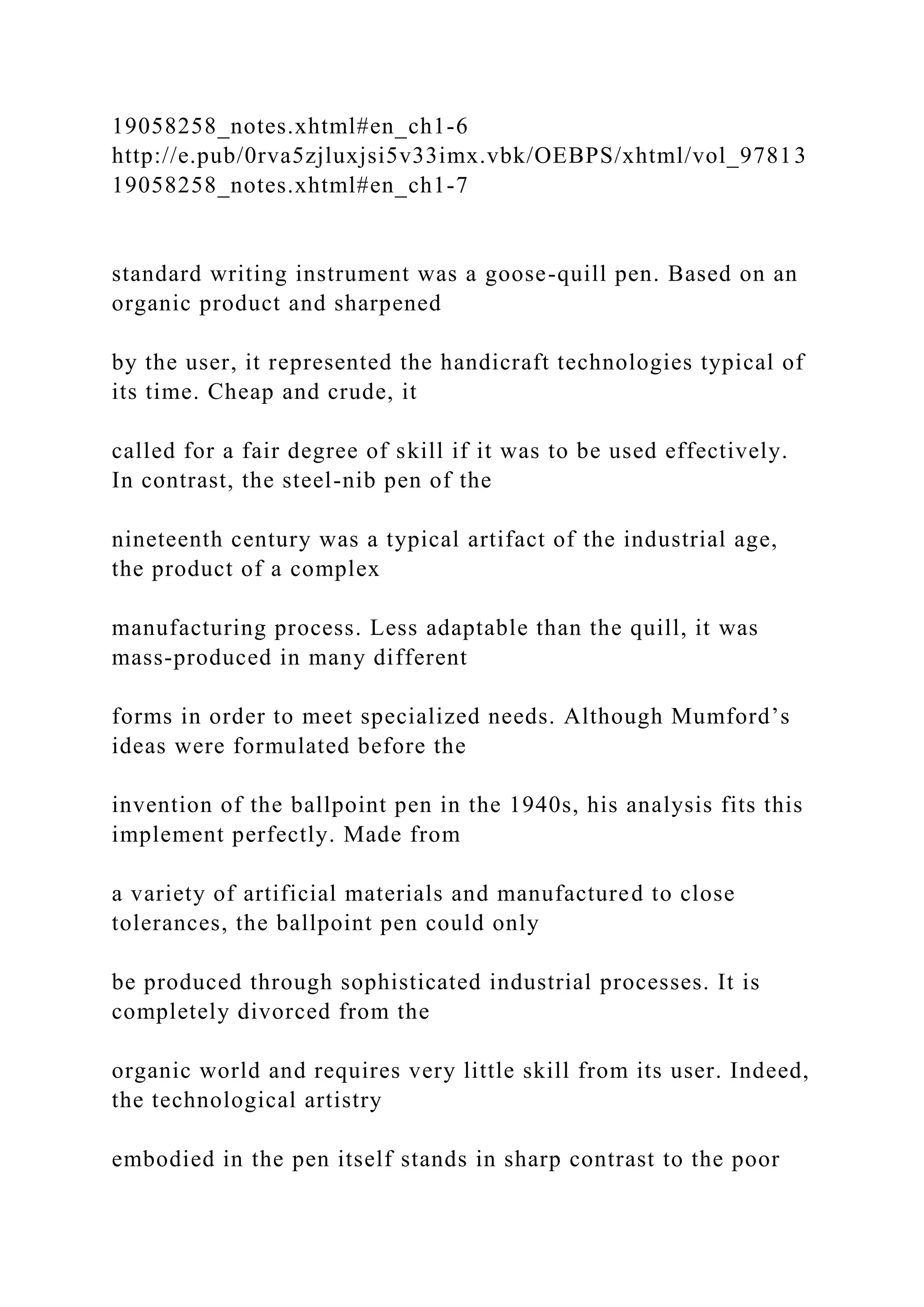

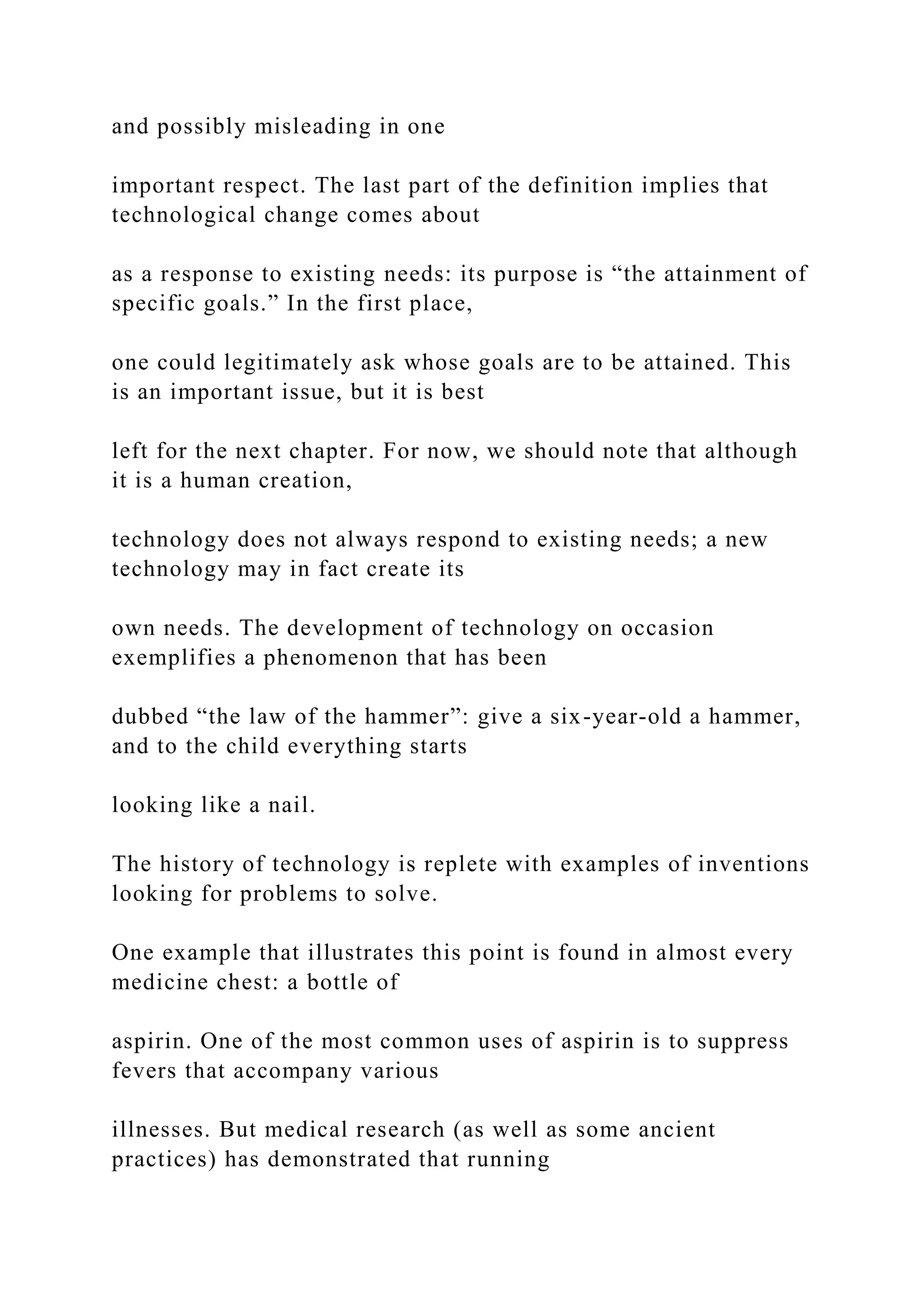
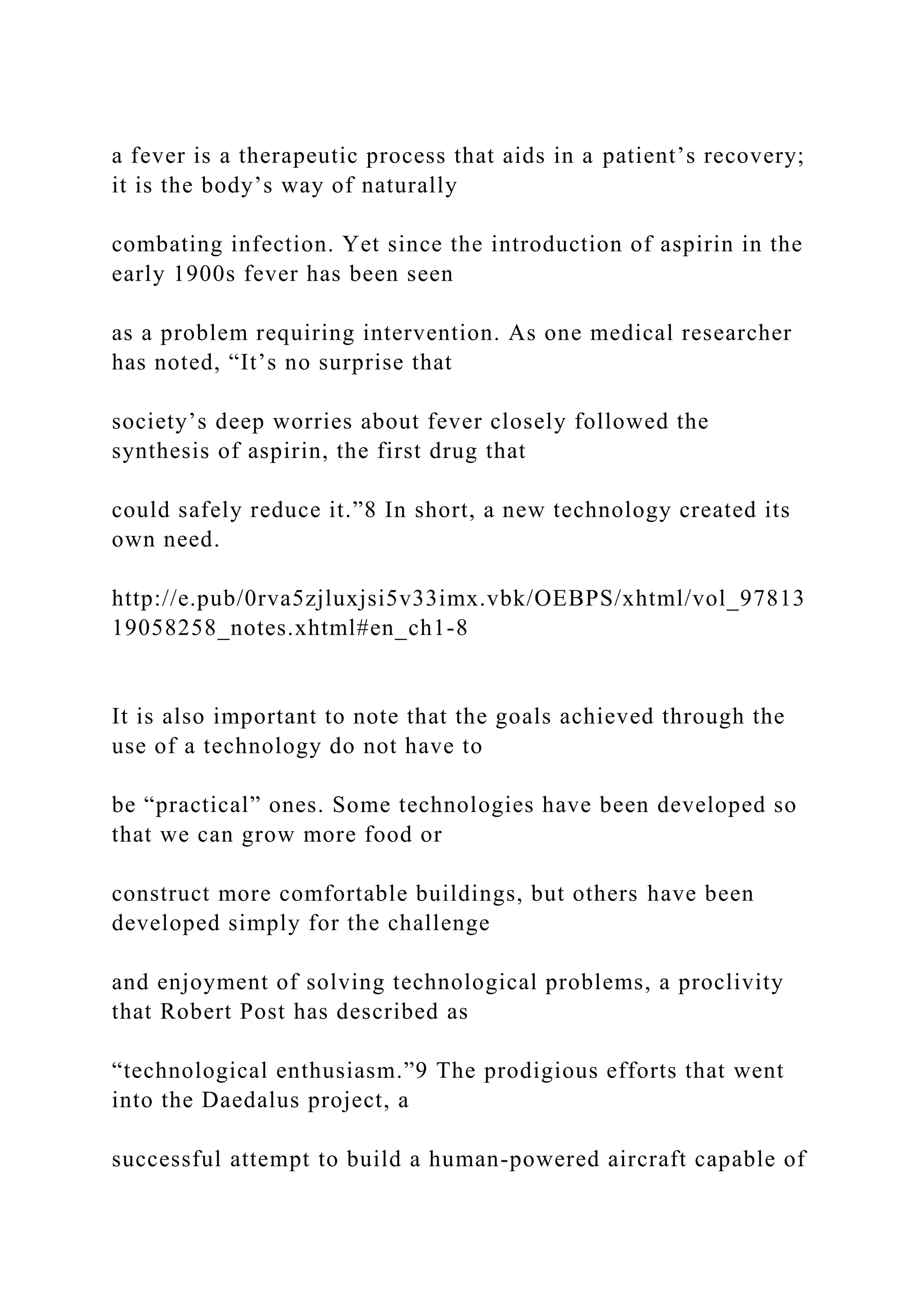
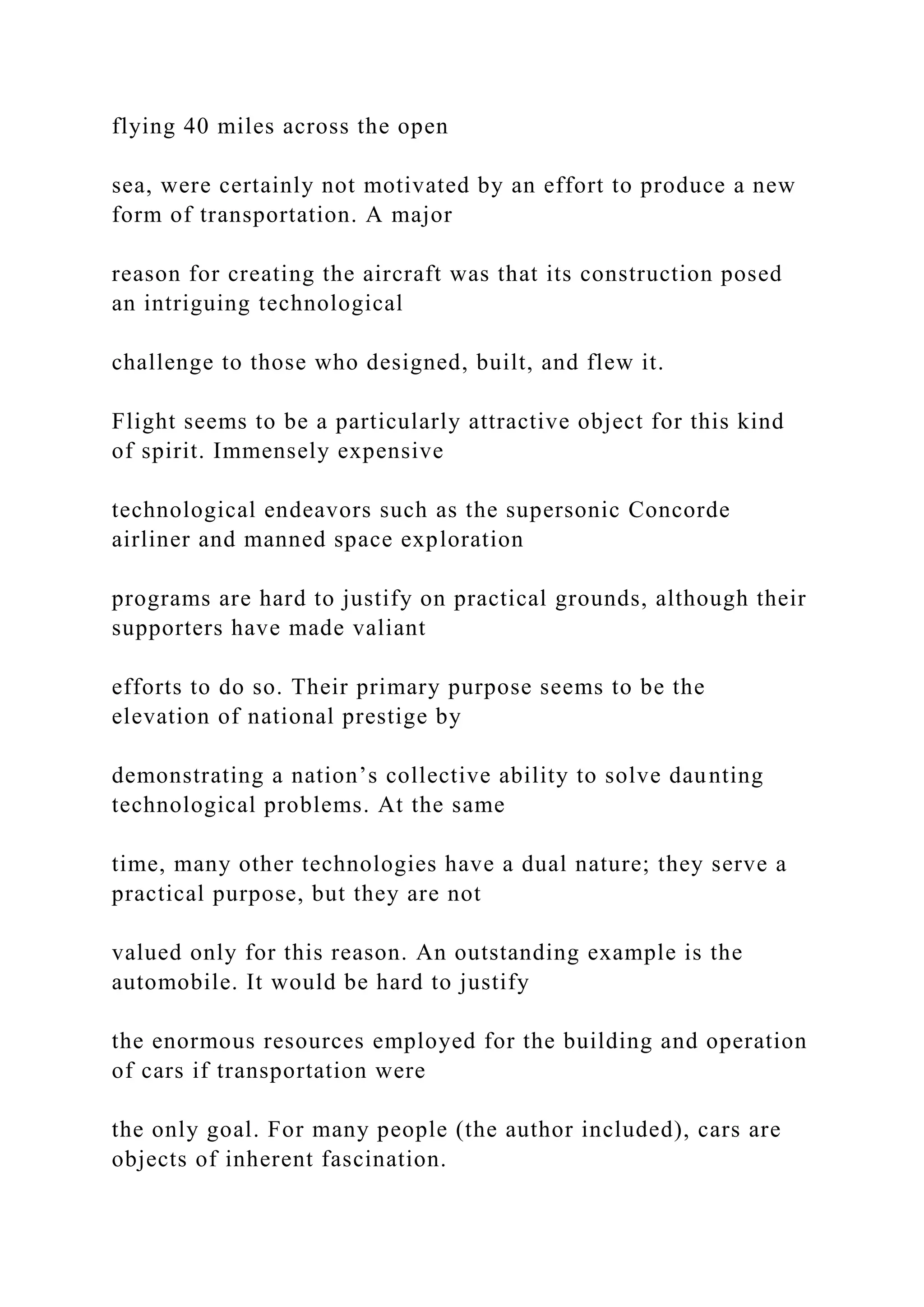

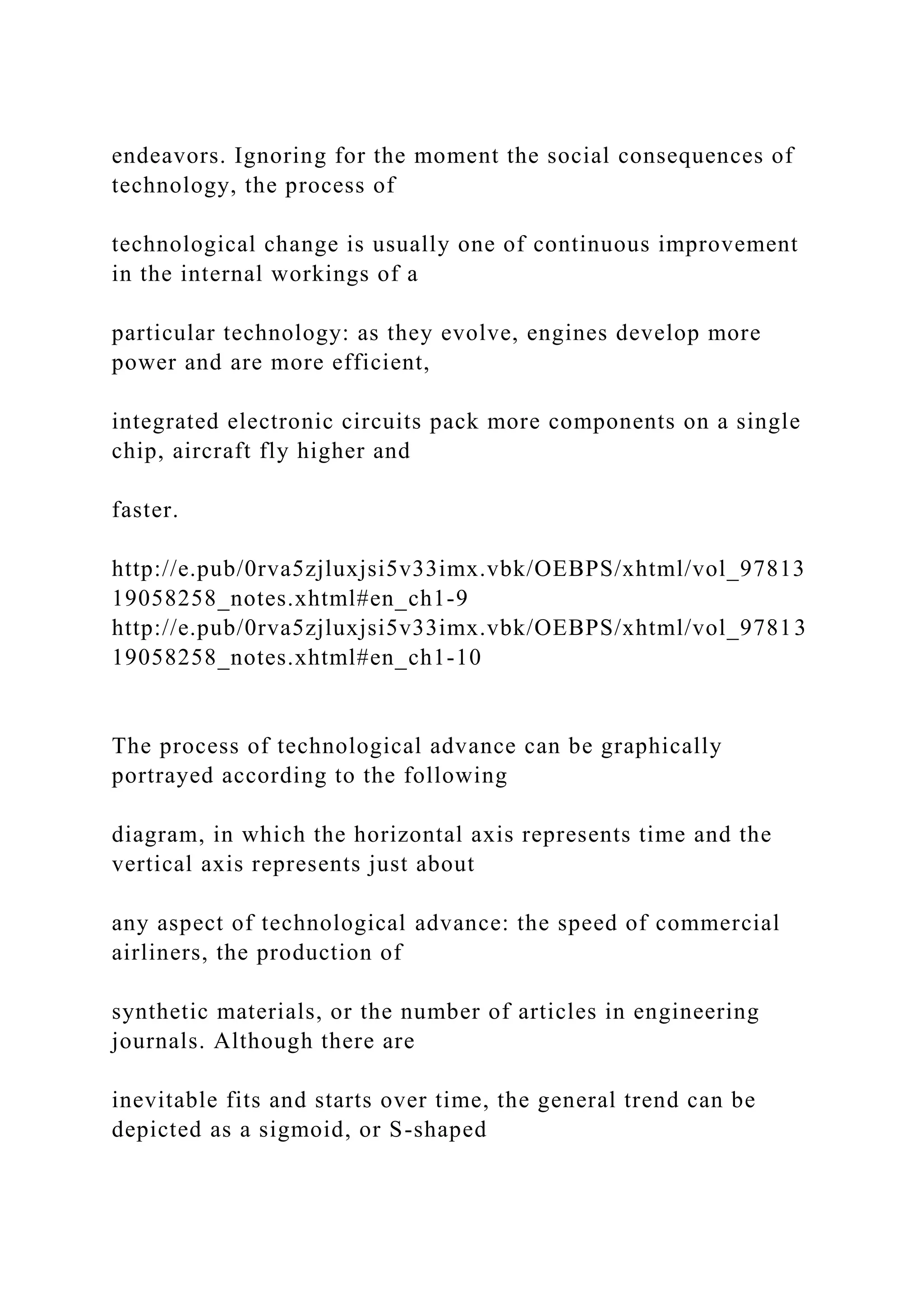
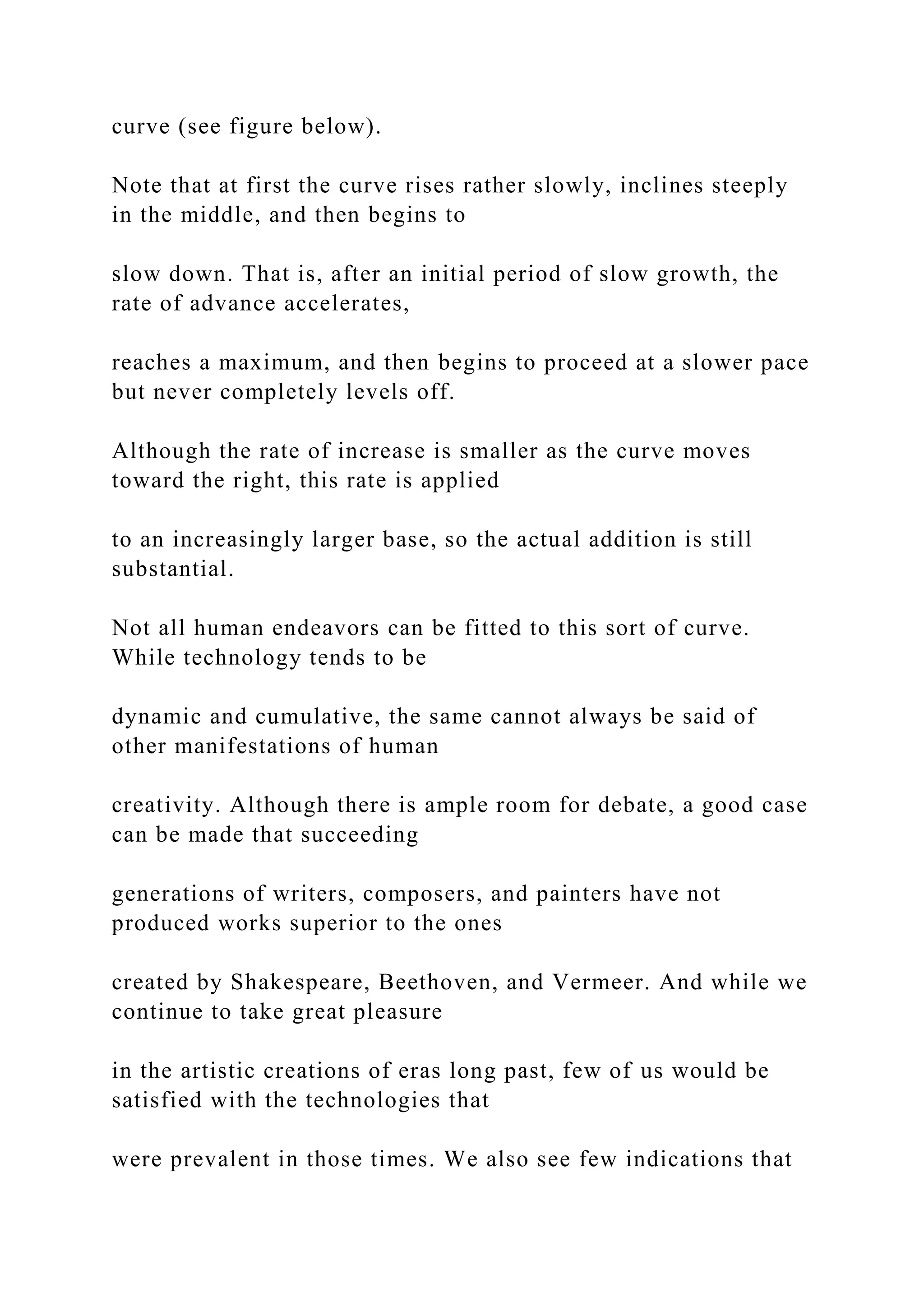
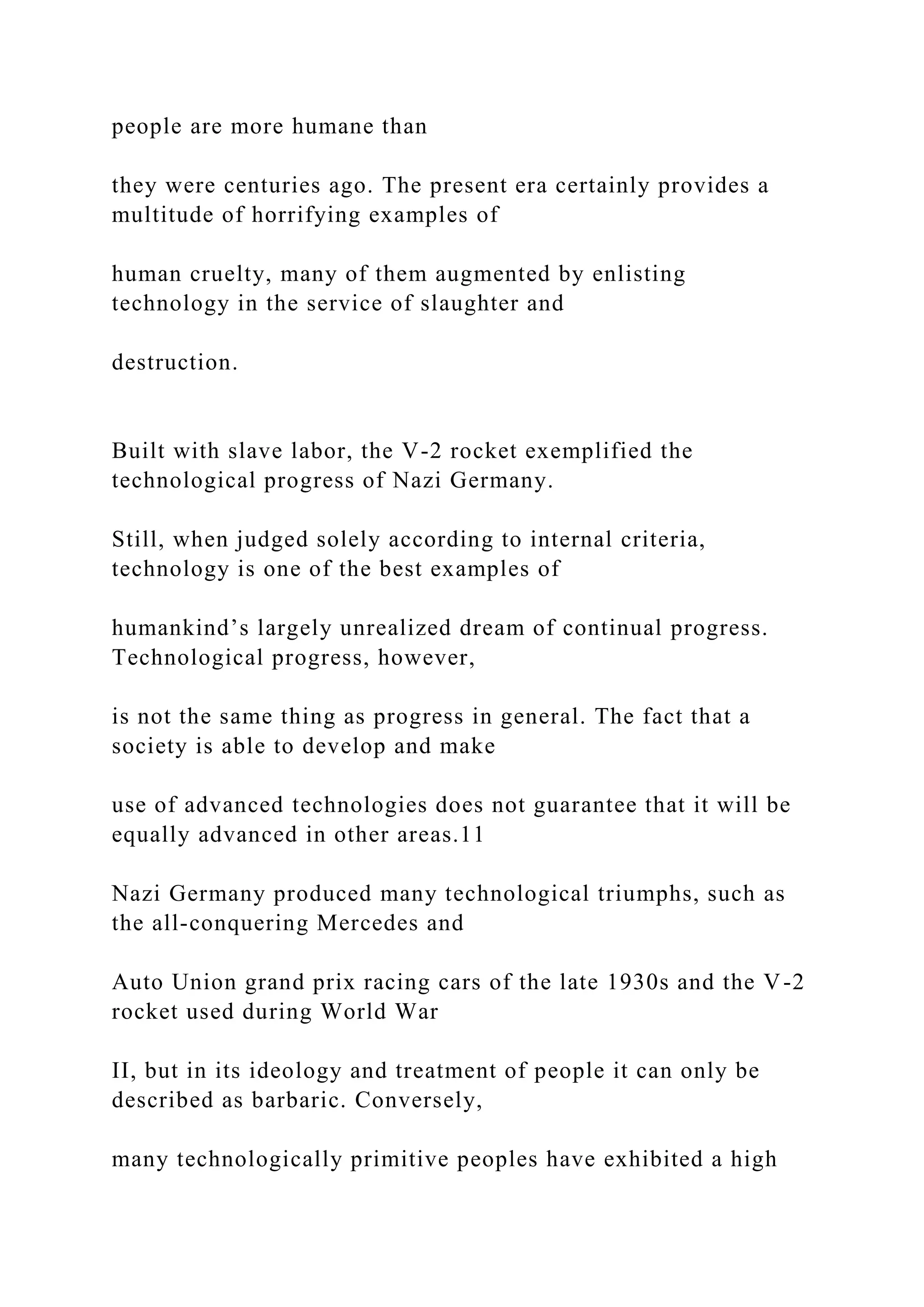
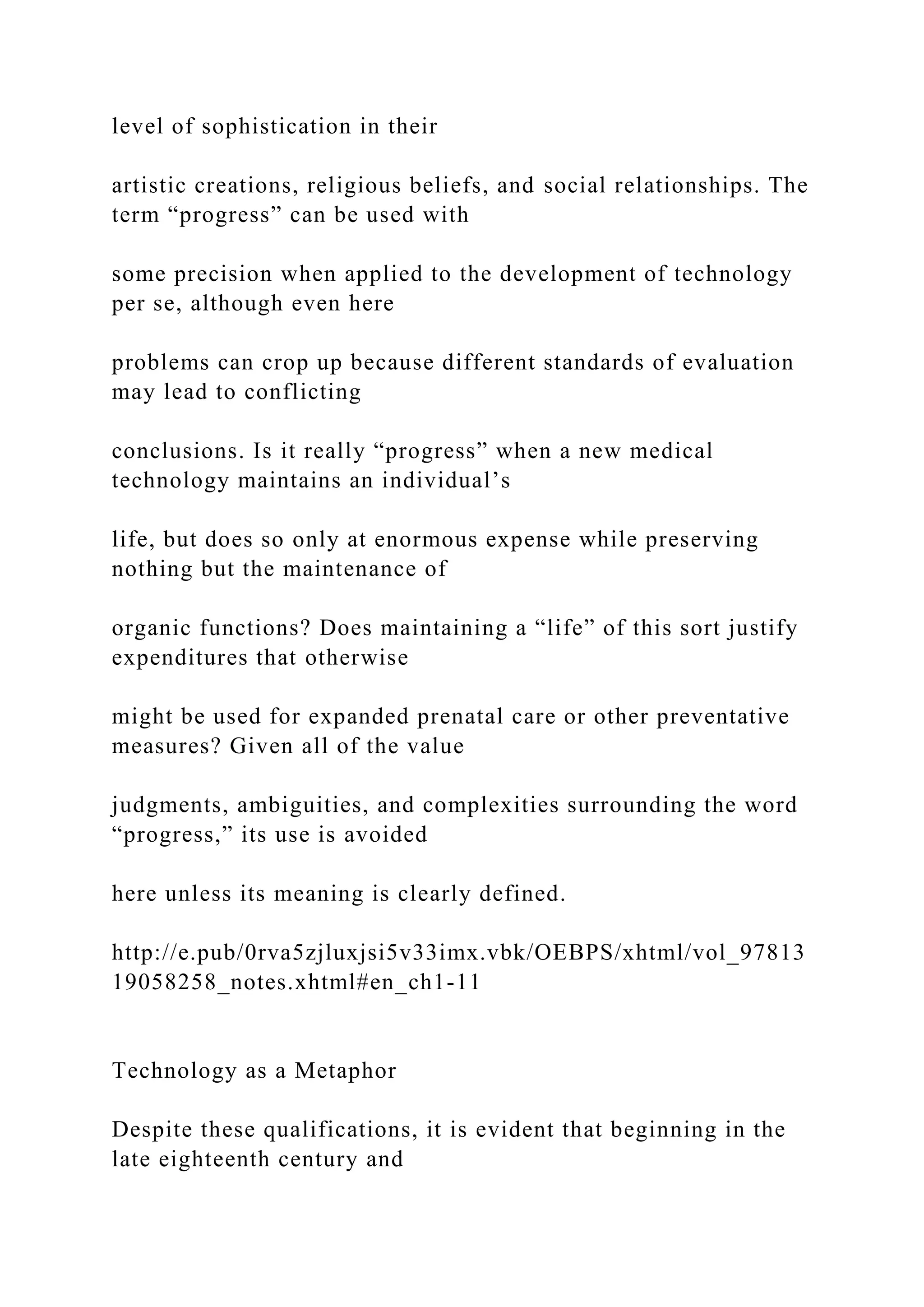



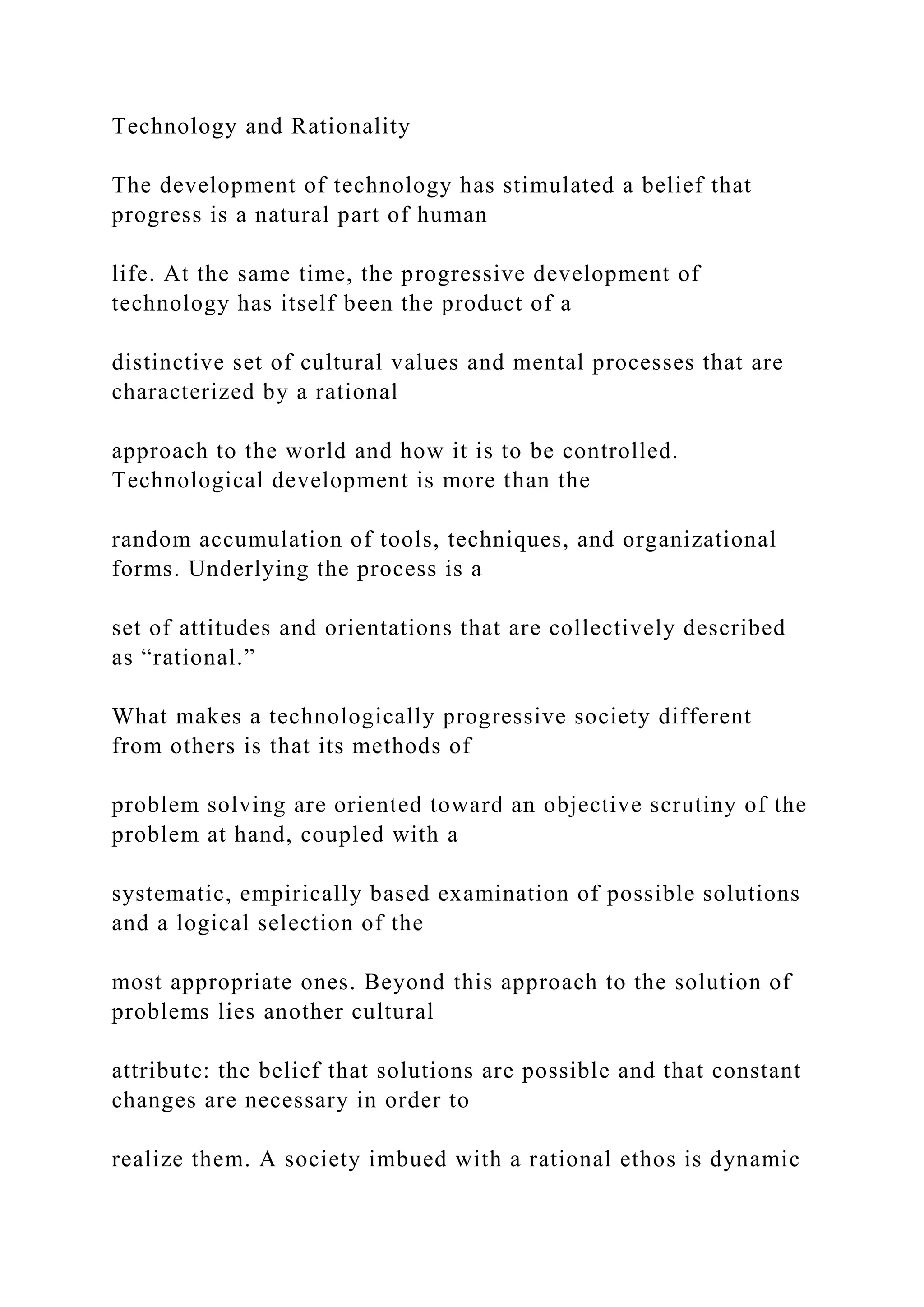

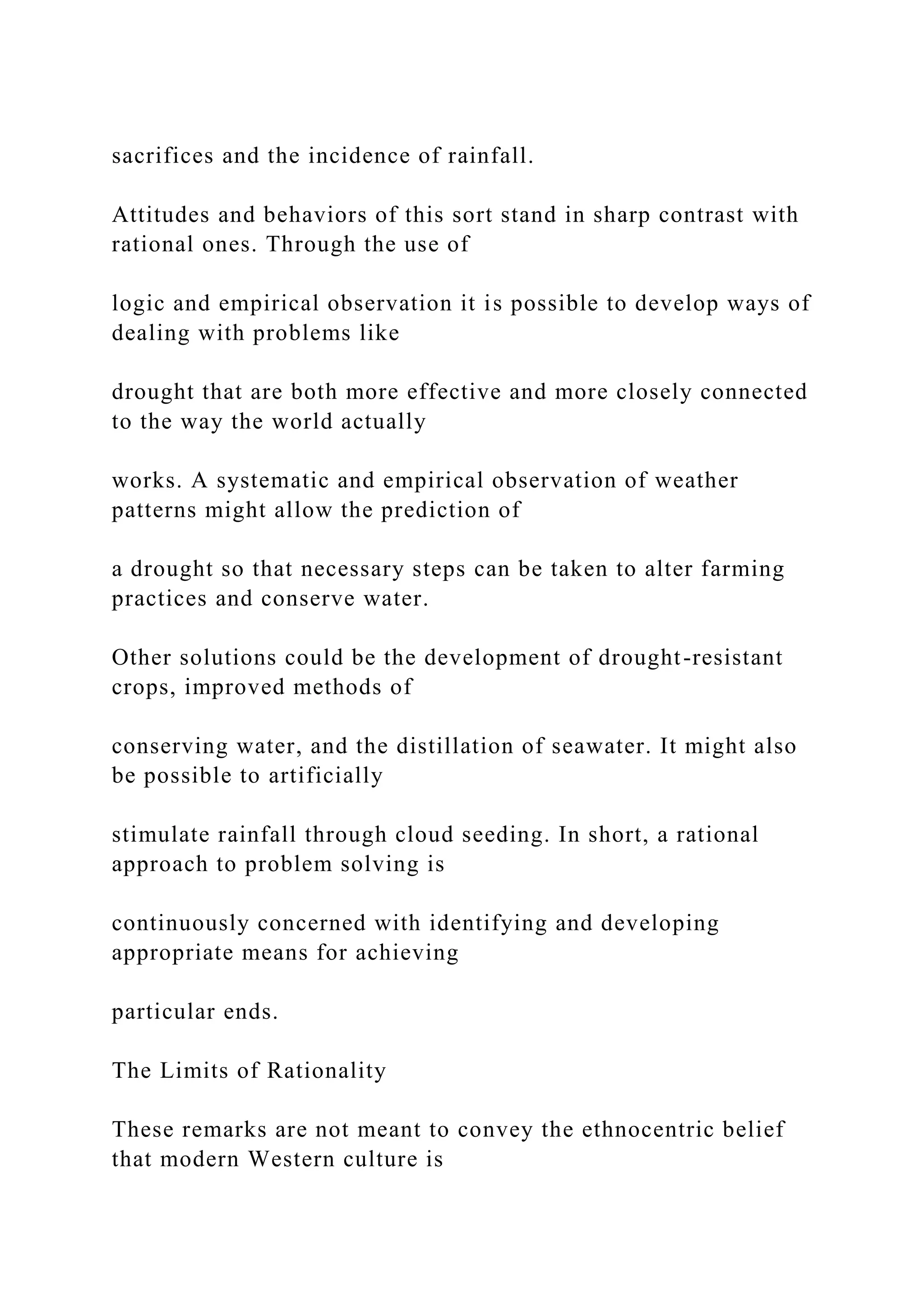
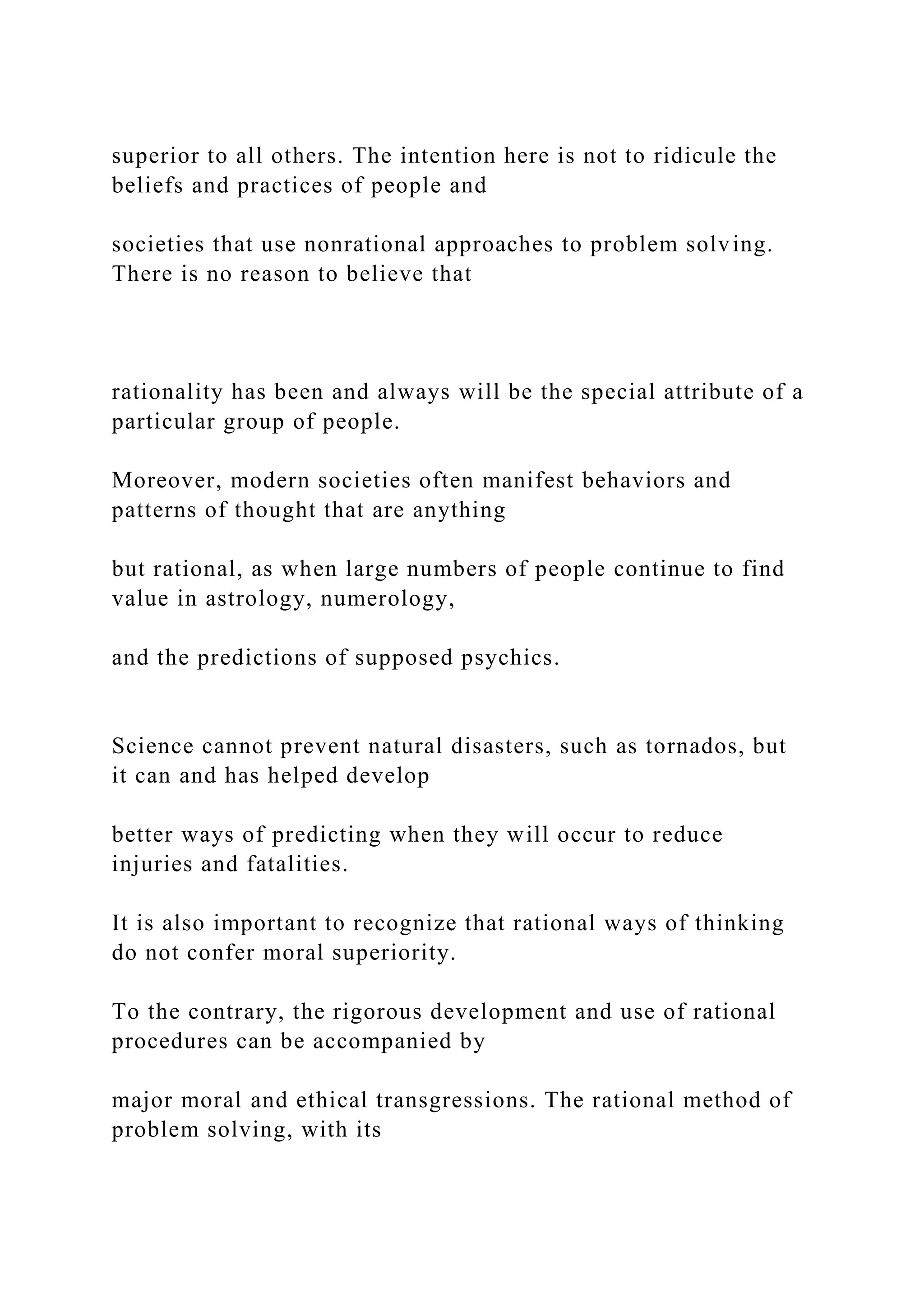



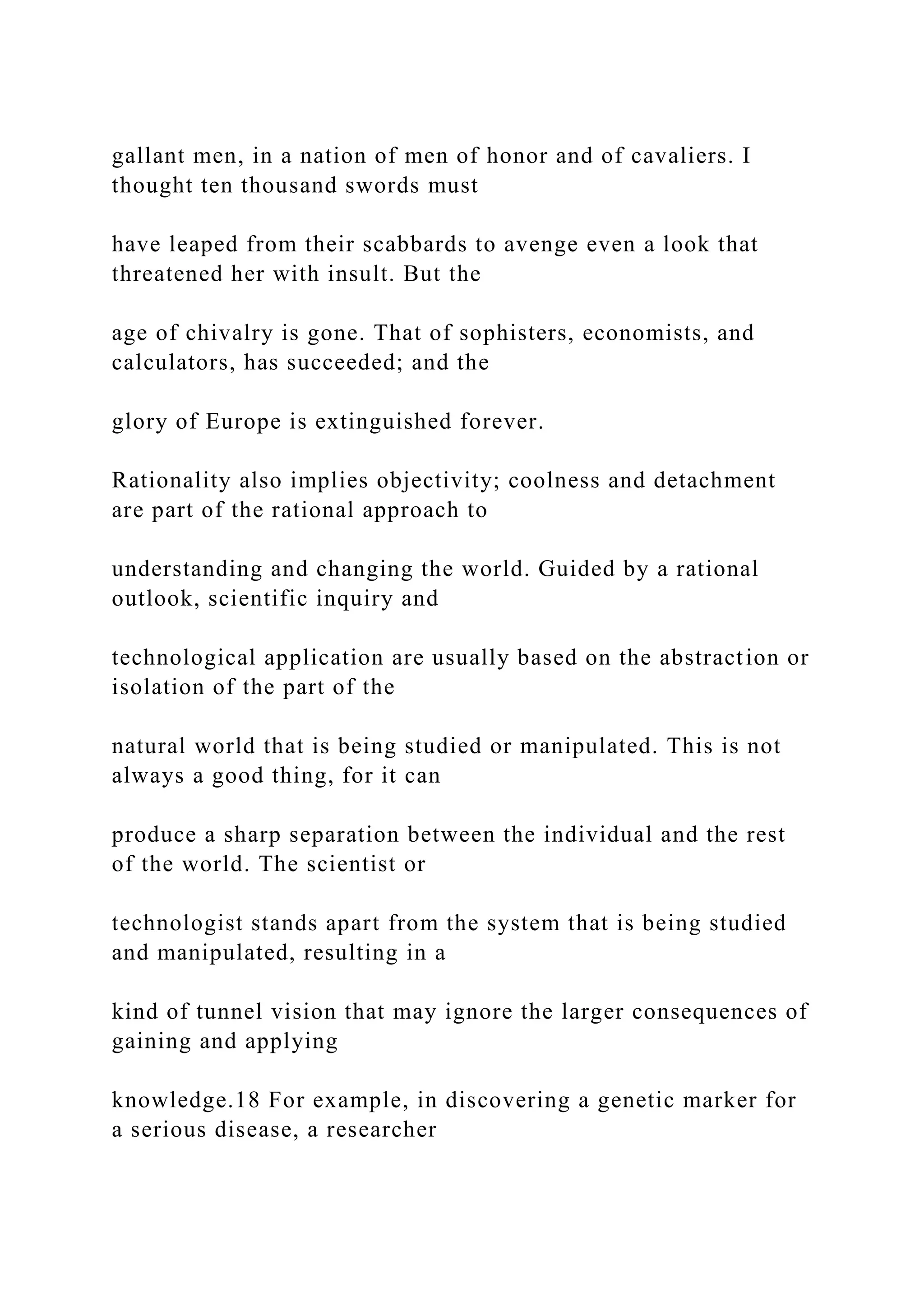
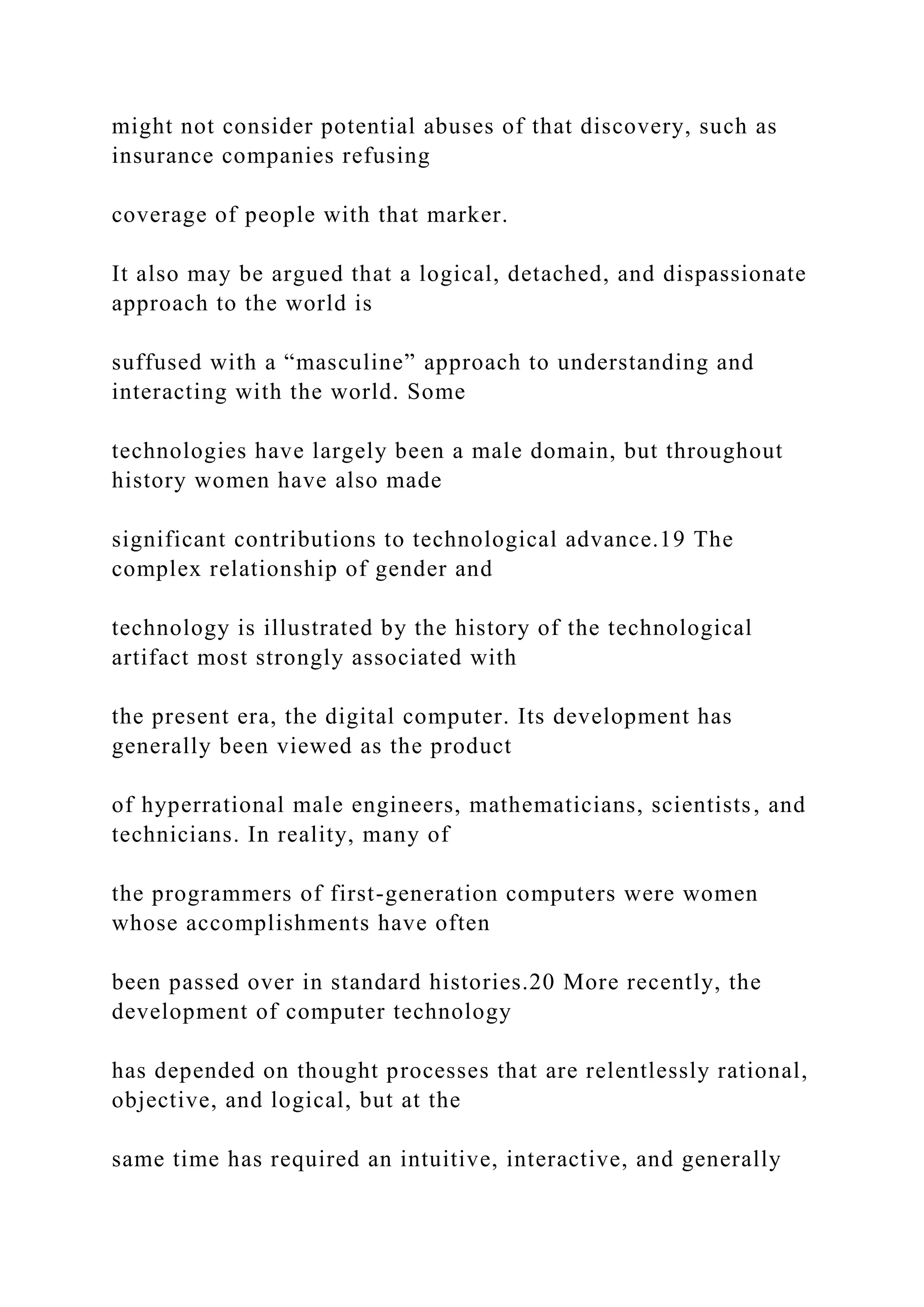
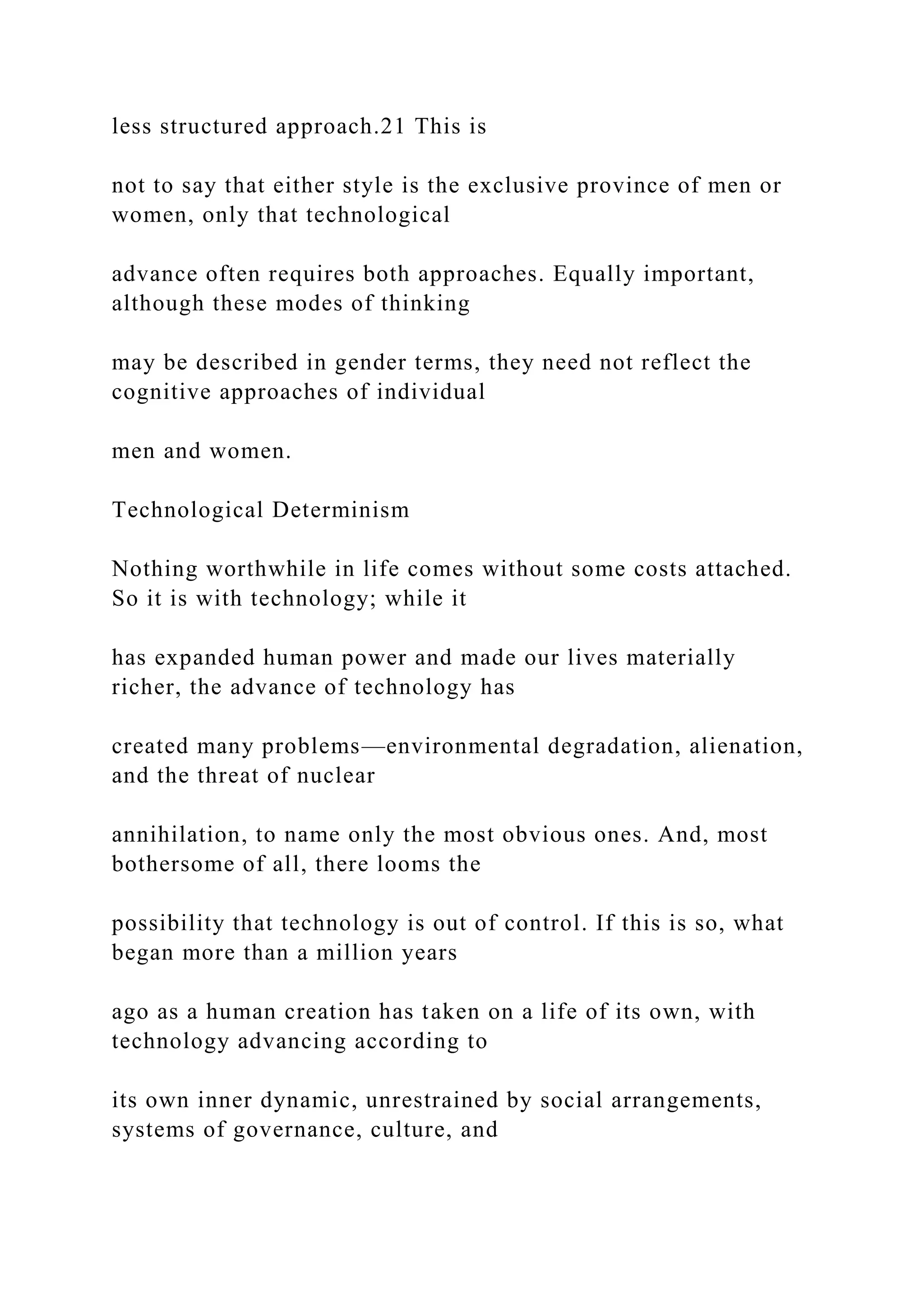
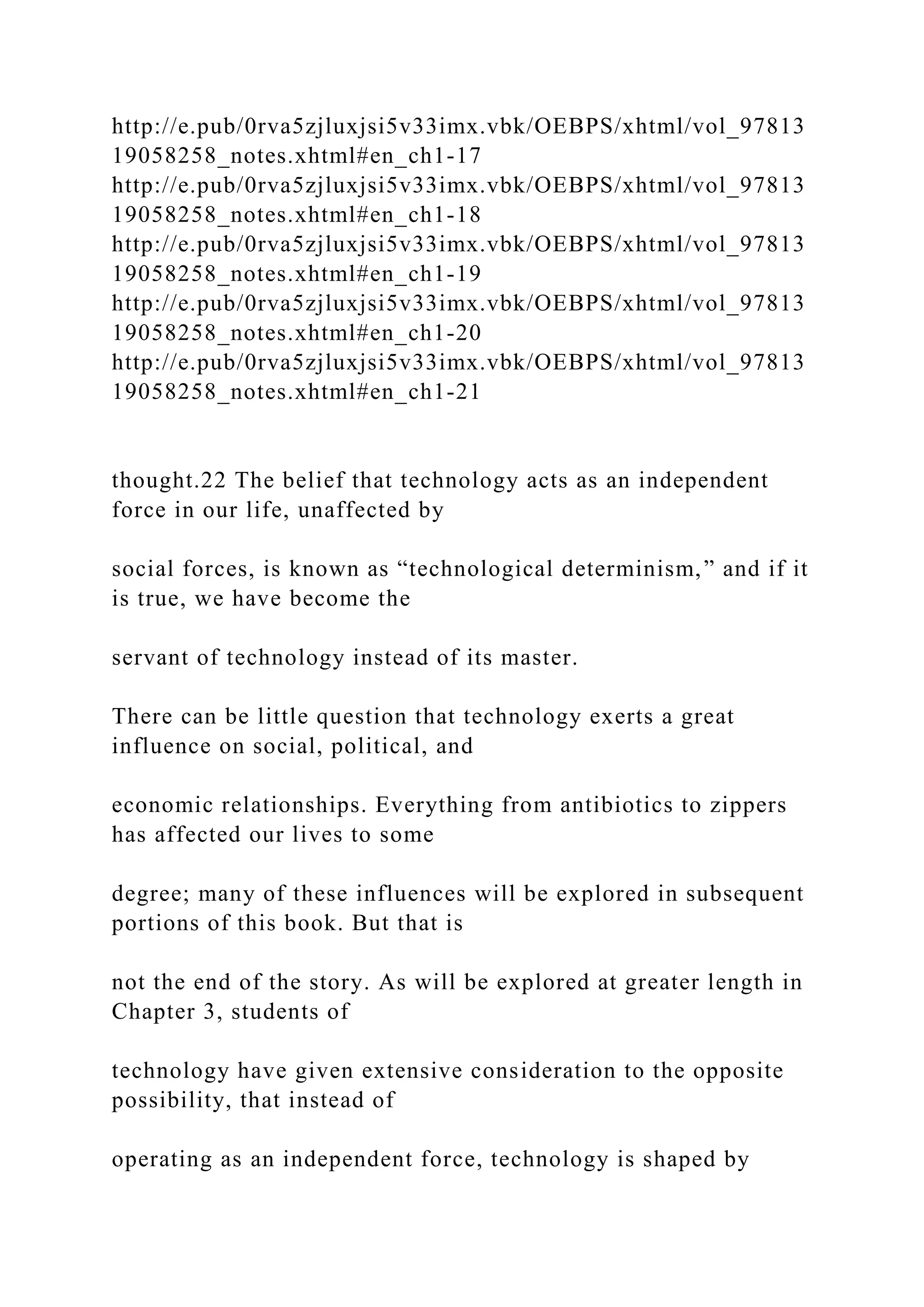
![social arrangements. According to
social constructivists (adherents of the Social Construction of
Technology approach), the
emergence of particular technologies, choices between
competing technologies, and the way
these technologies are actually used owe a great deal to socially
grounded forces such as political
power, social class, gender, and organizational dynamics.
Asserting the supremacy of either technological determinism or
social constructivism is not a
very useful activity. Such straightforward cause-and-effect
relationships can be found in some
realms—Newtonian physics, for example—but technological
and social change is better
understood in terms of probabilities, reciprocal interactions, and
feedback loops. Even William
F. Ogburn, a sociologist who is often characterized as a
technological determinist, on occasion
took a more nuanced view of the subject: “The more that one
studies the relationships between
mechanical and social invention, the more interrelated they
seem…. The whole interconnected
mass [i.e., social institutions, customs, technology, and science]
is in motion. When each part is](https://image.slidesharecdn.com/chapteronethenatureoftechnologytodaystechnol-230110115923-da106a61/75/CHAPTER-ONE-The-Nature-of-Technology-Today-s-technol-docx-35-2048.jpg)
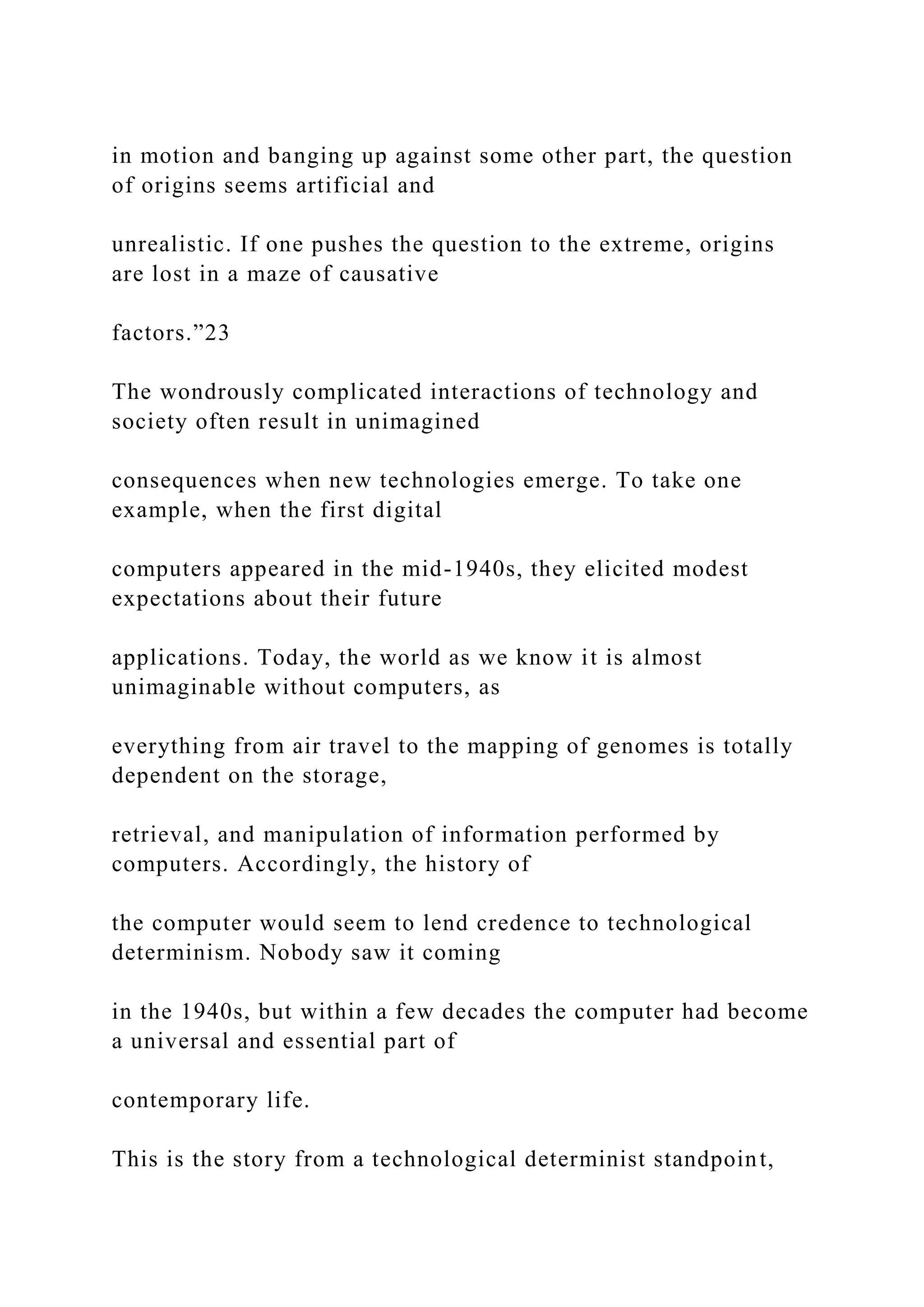
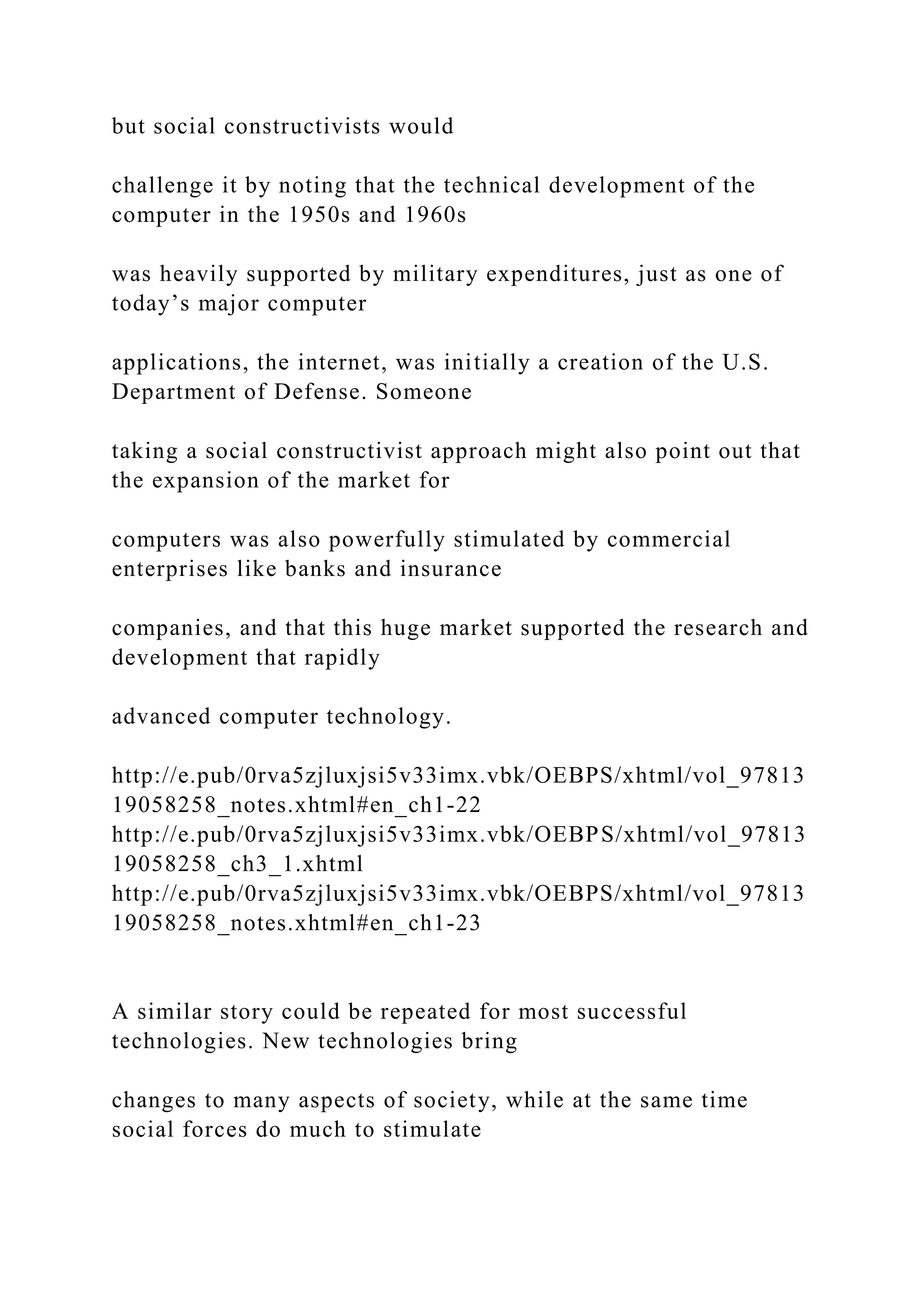

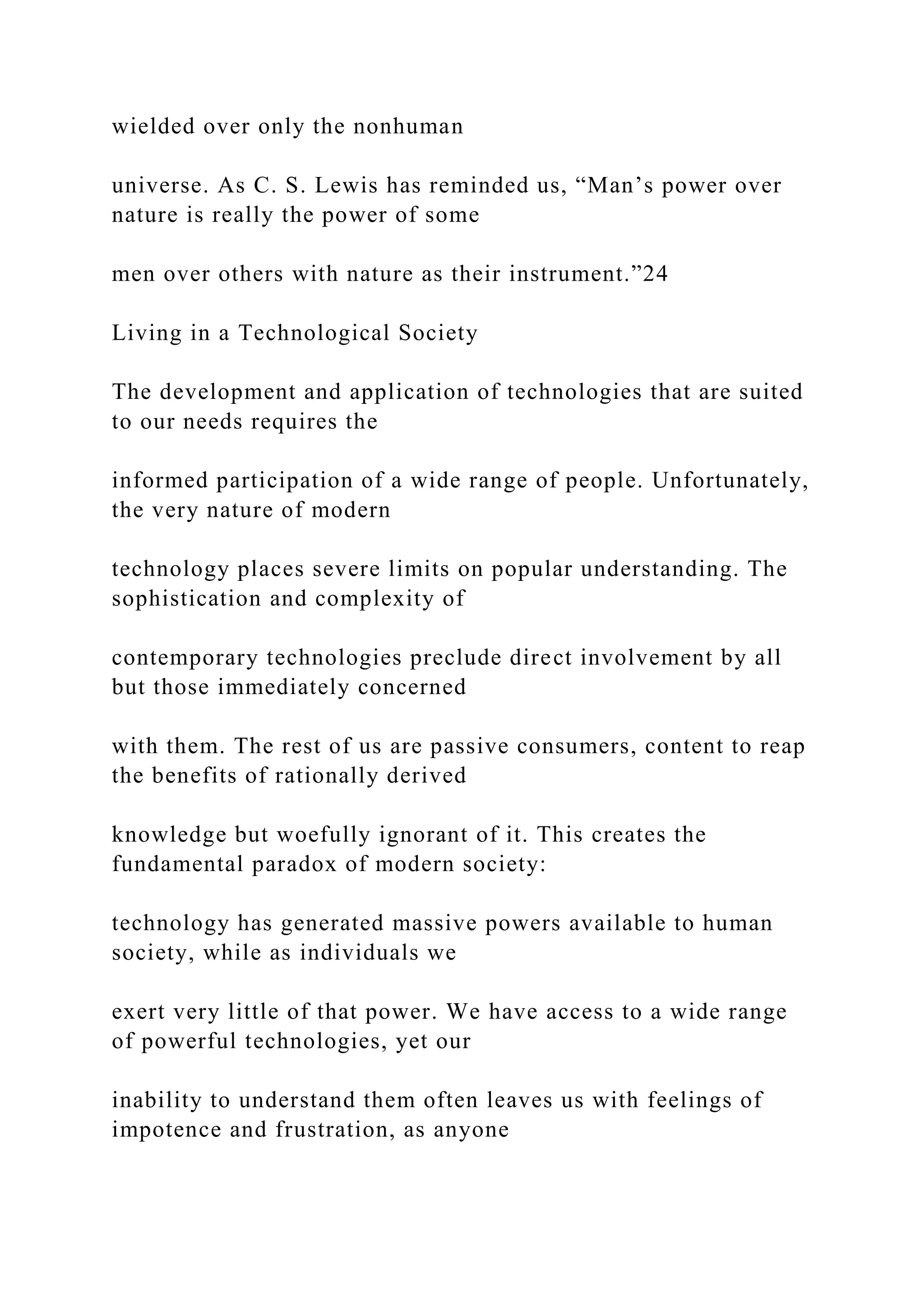
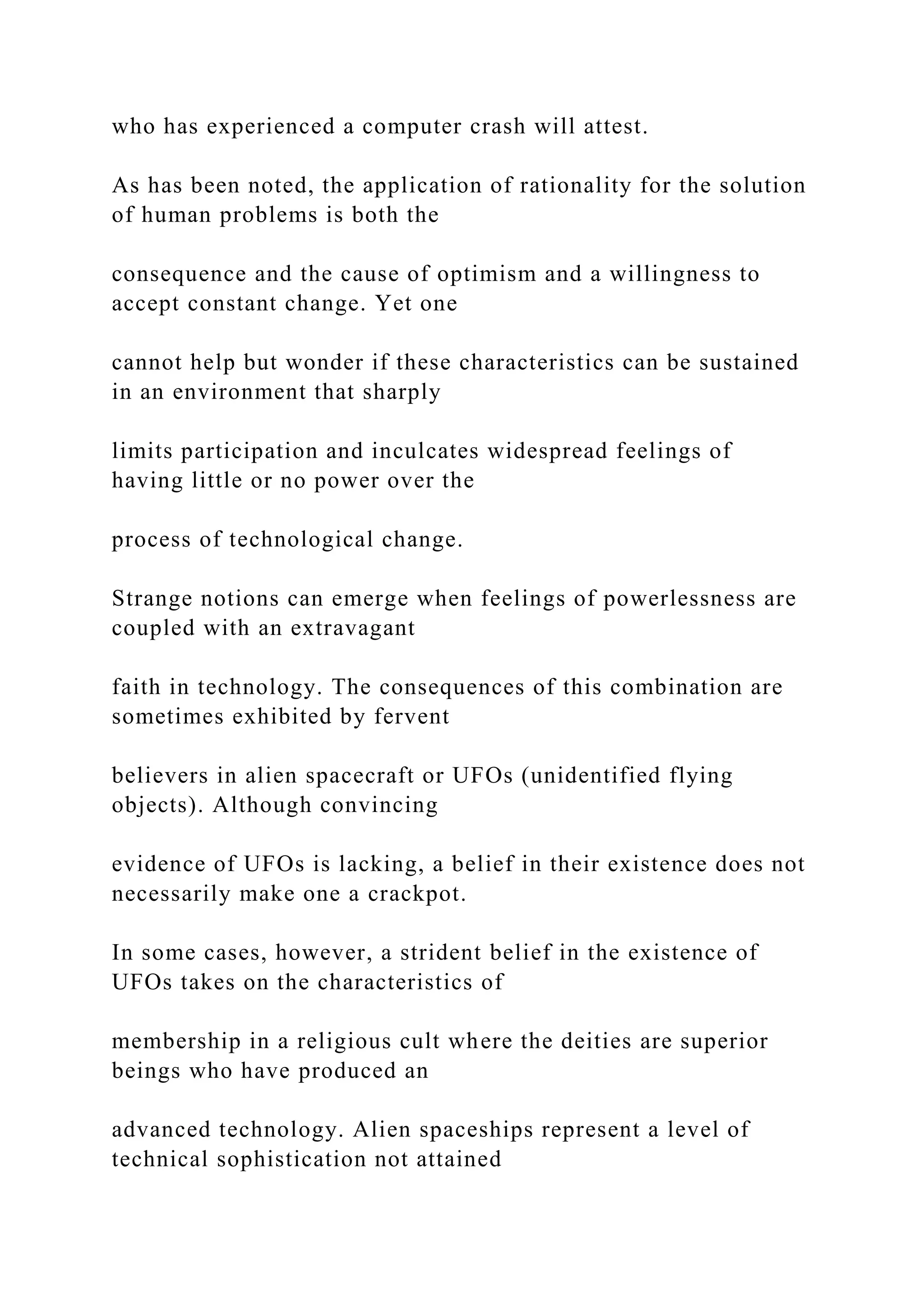
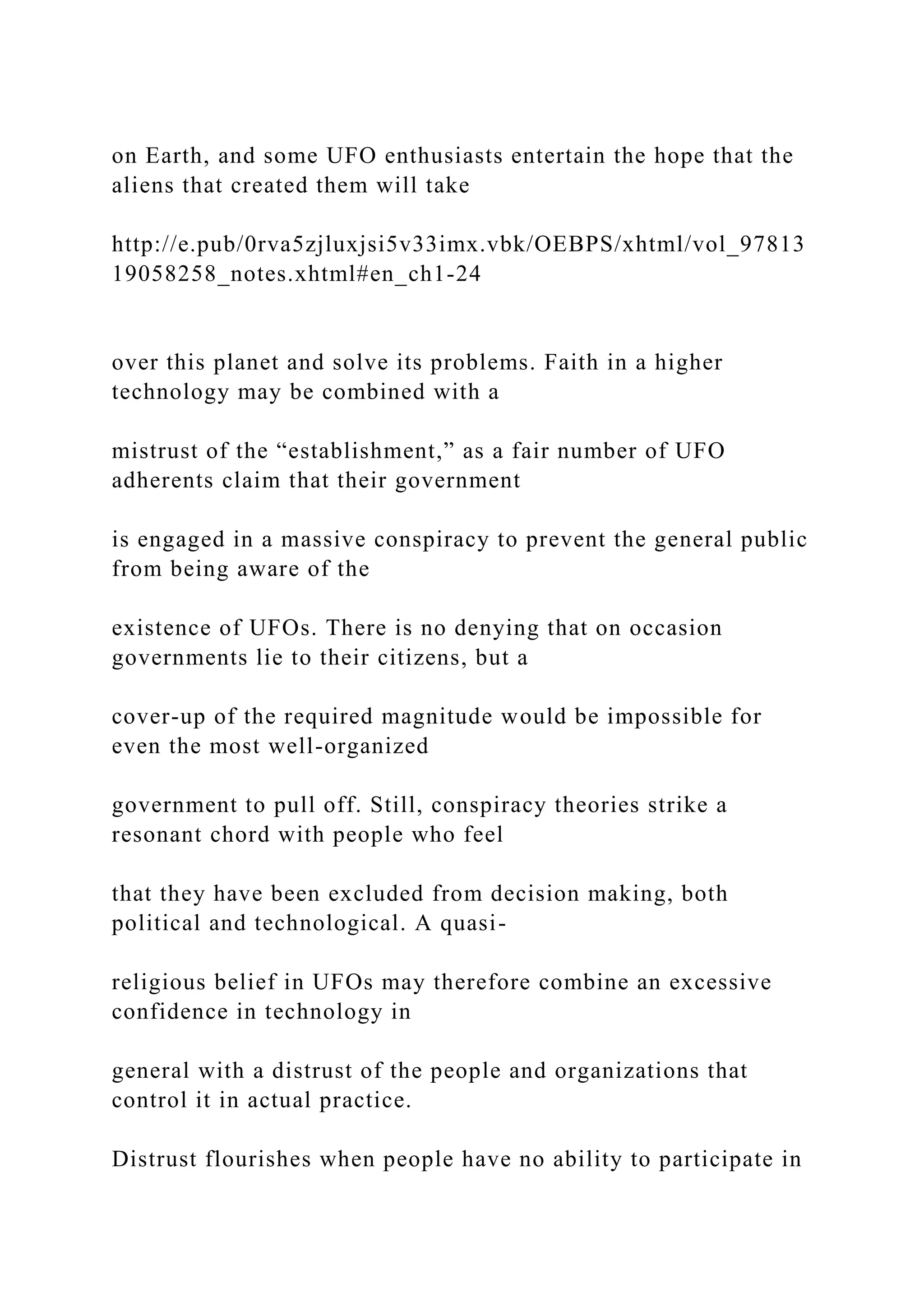
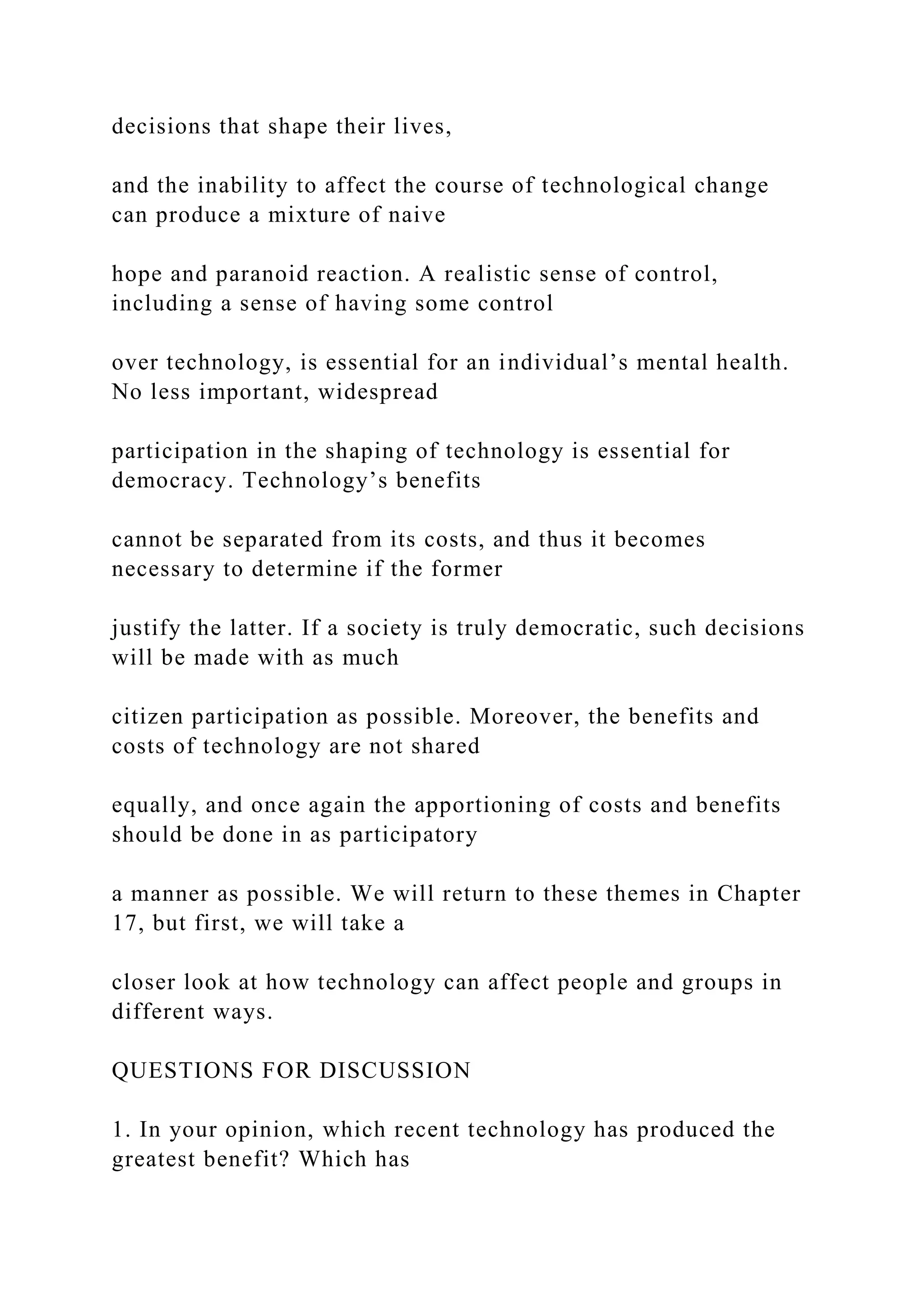
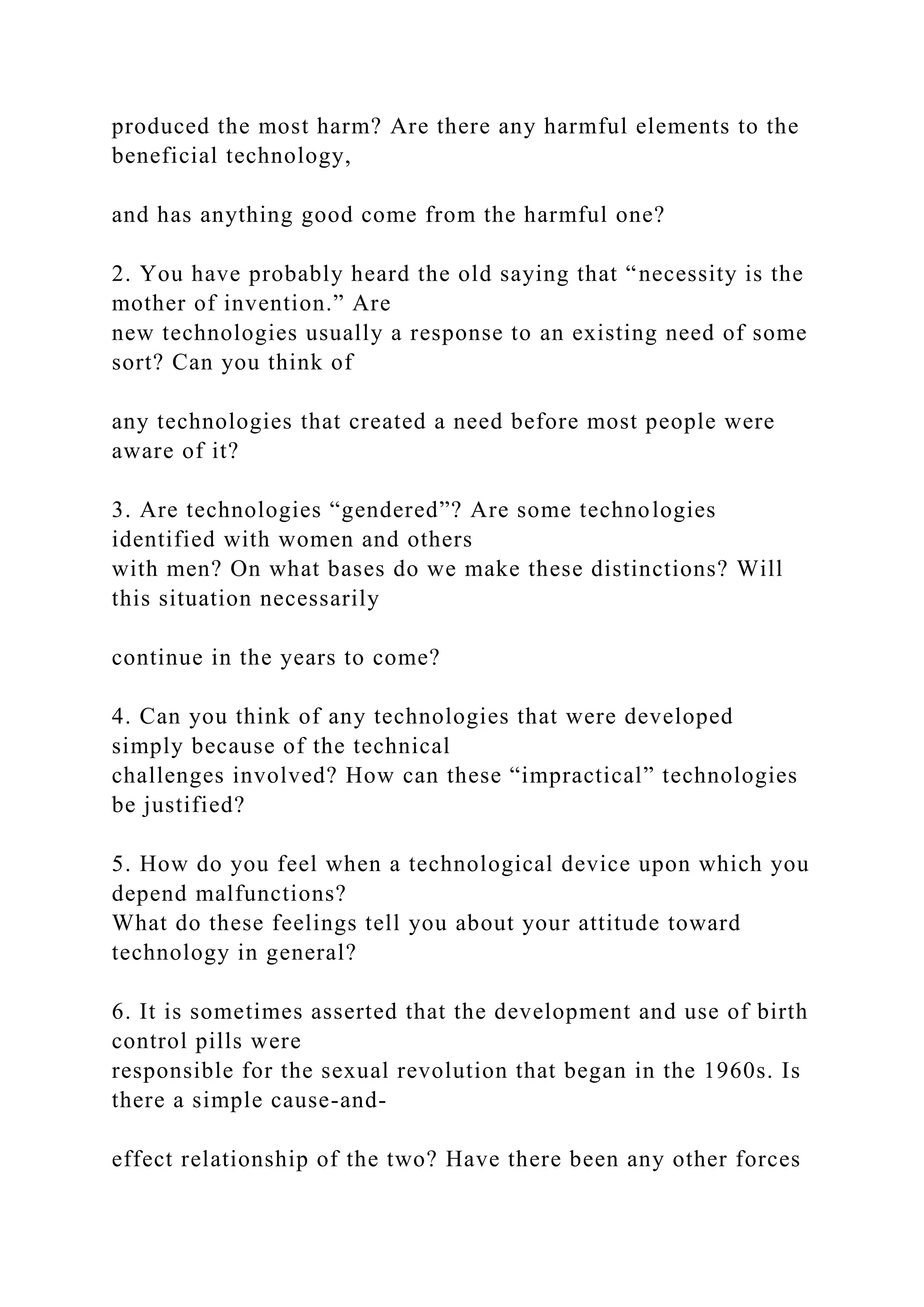
![that contributed to
changing sexual mores?
Volti, R. (20170109). Society and Technological Change, 8th
Edition [VitalSource Bookshelf
version]. Retrieved from
https://bookshelf.vitalsource.com/books/9781319129729
http://e.pub/0rva5zjluxjsi5v33imx.vbk/OEBPS/xhtml/vol_97813
19058258_ch17_1.xhtml](https://image.slidesharecdn.com/chapteronethenatureoftechnologytodaystechnol-230110115923-da106a61/75/CHAPTER-ONE-The-Nature-of-Technology-Today-s-technol-docx-44-2048.jpg)